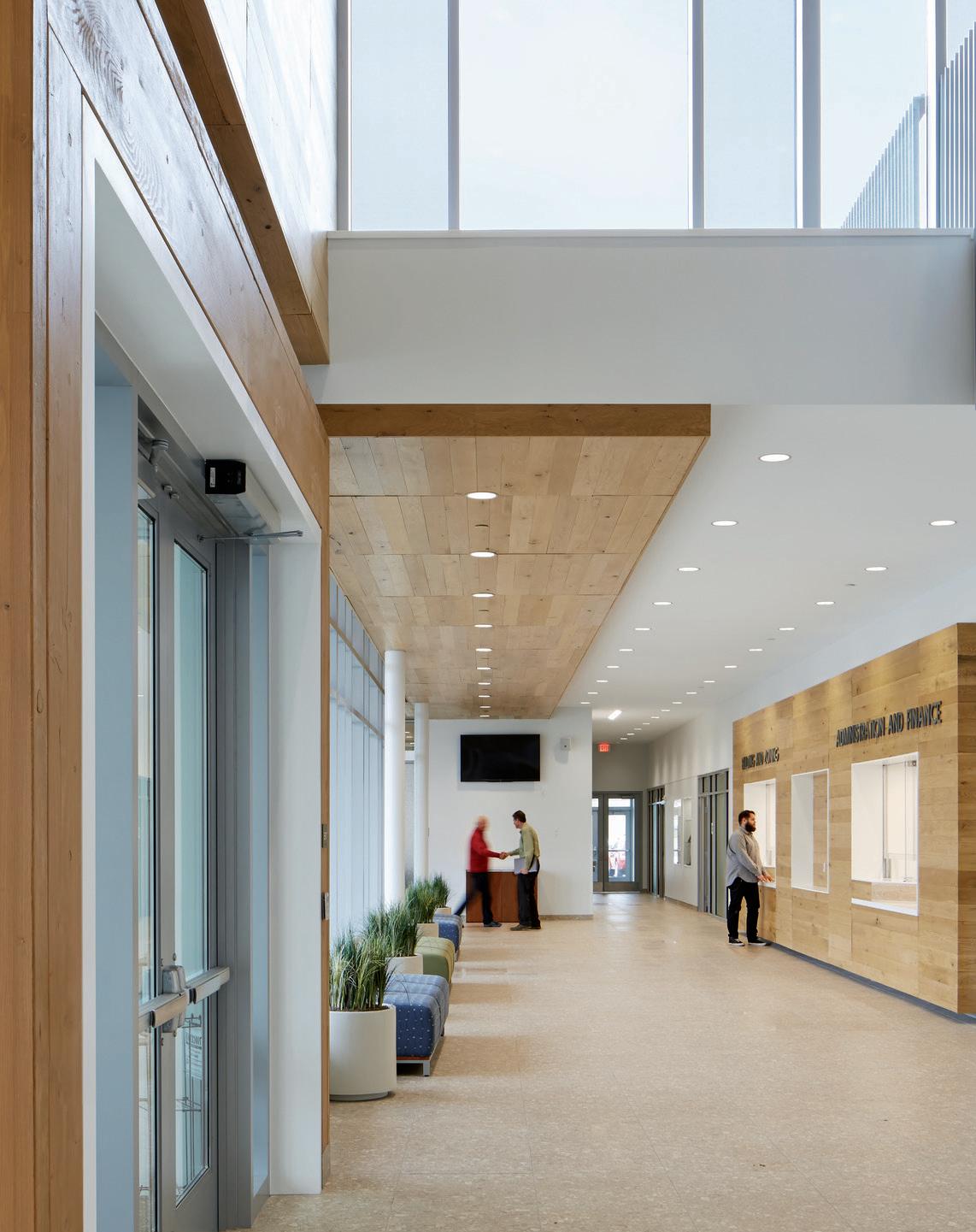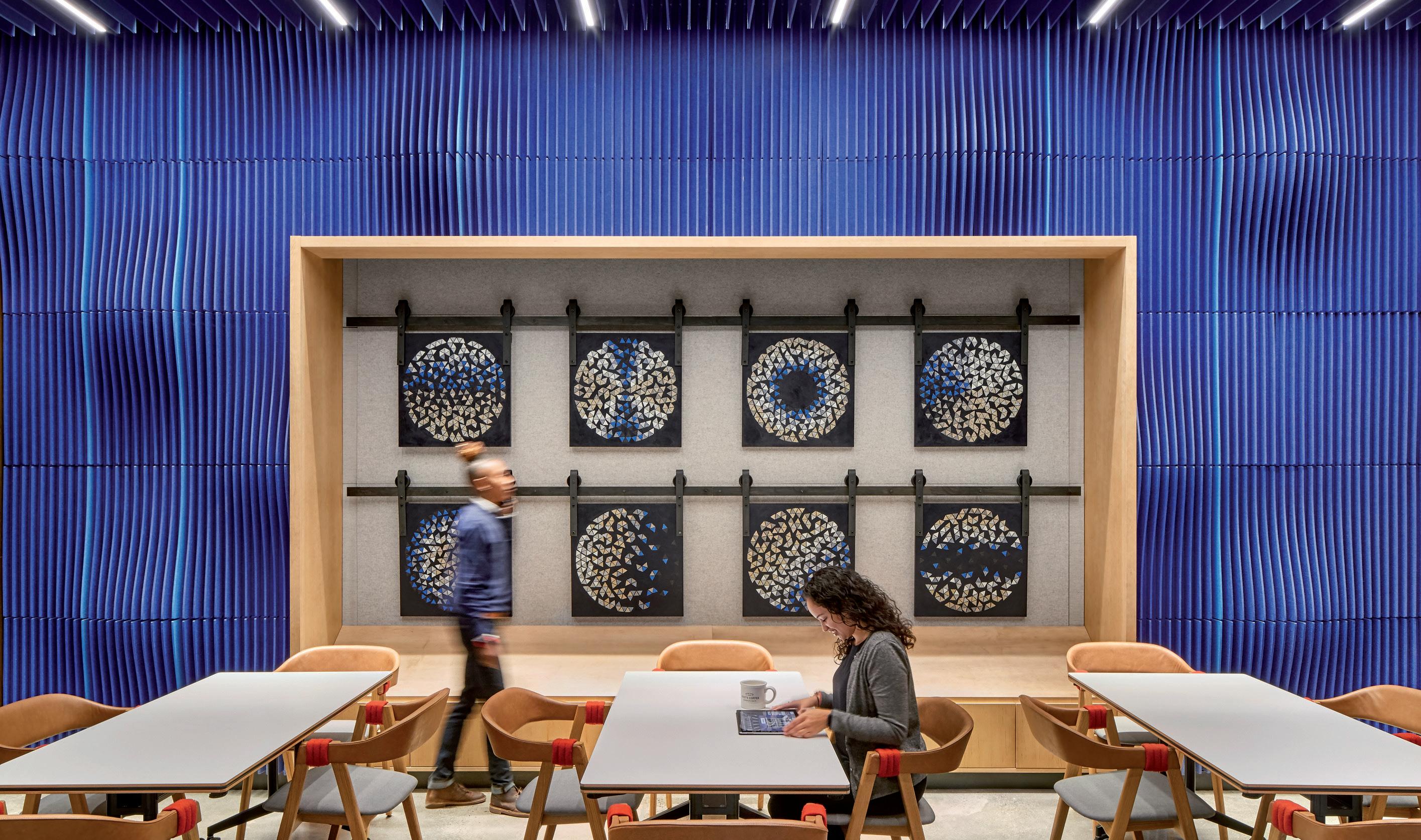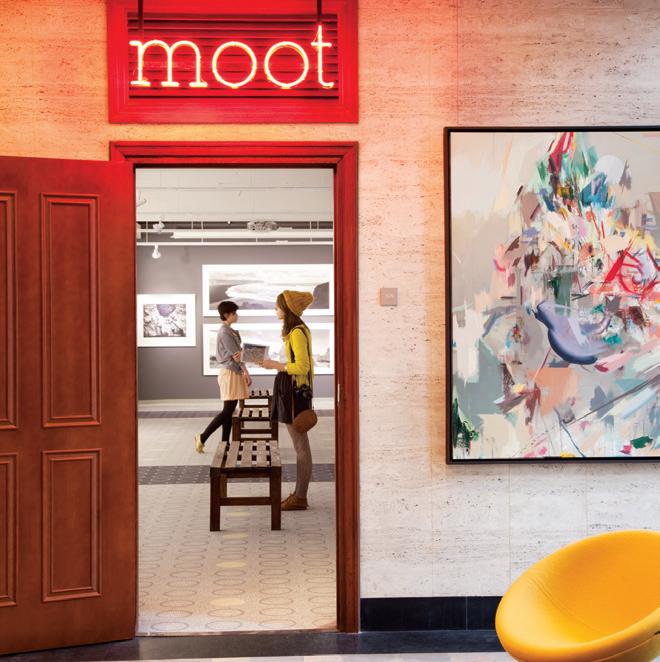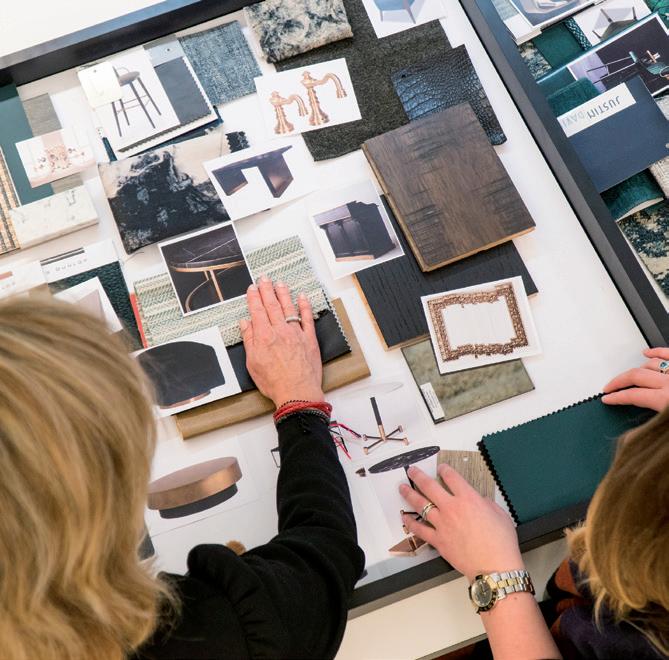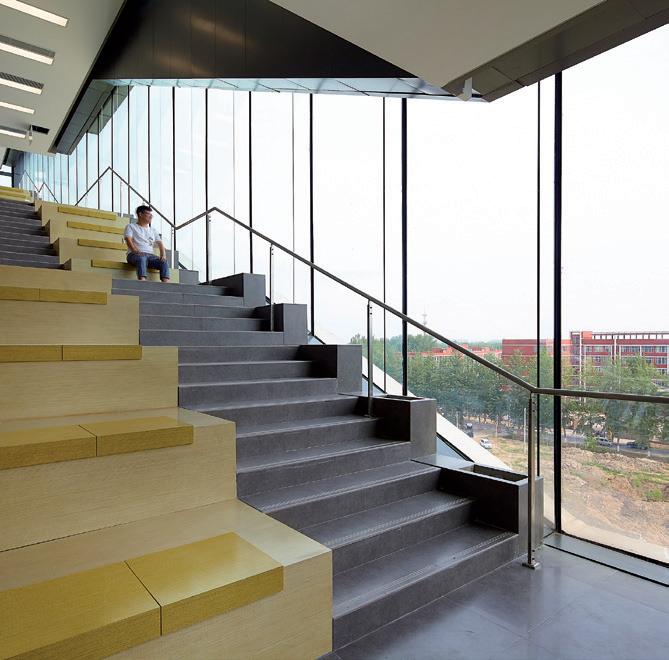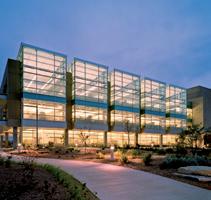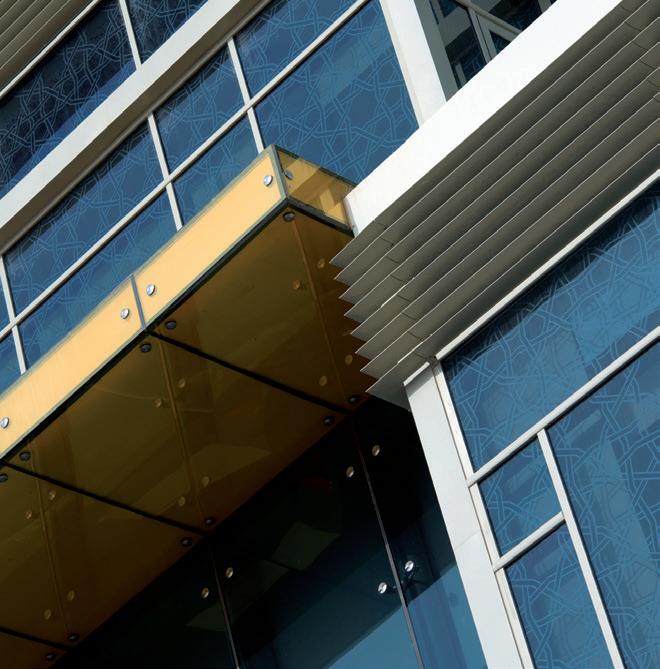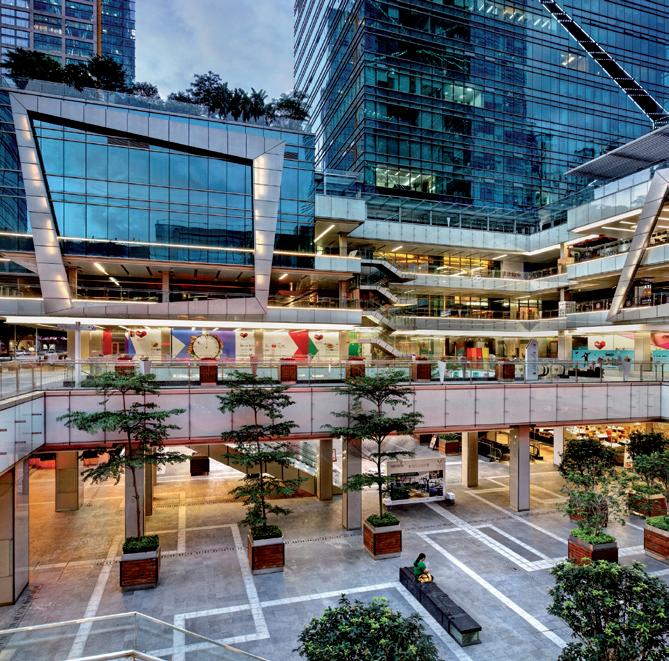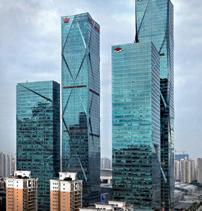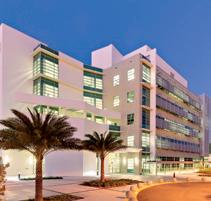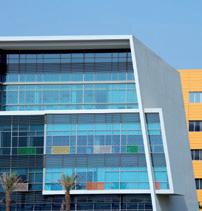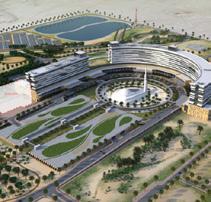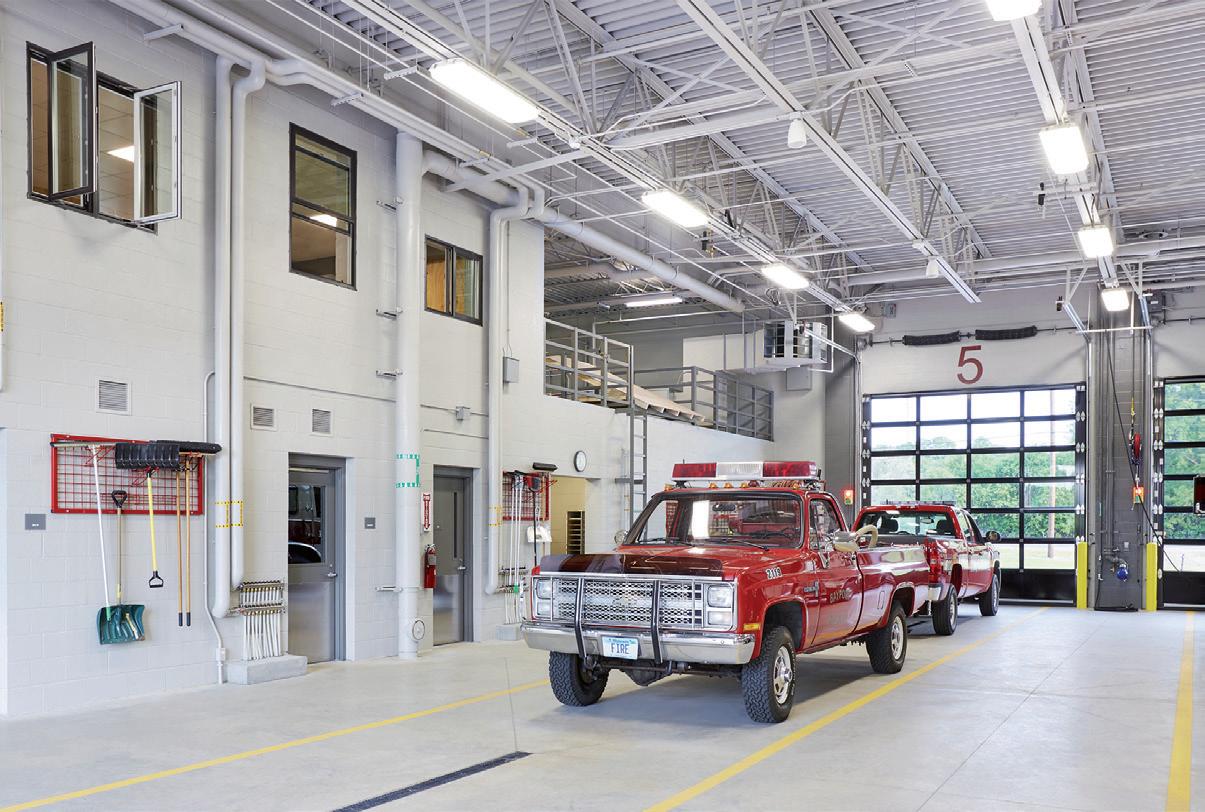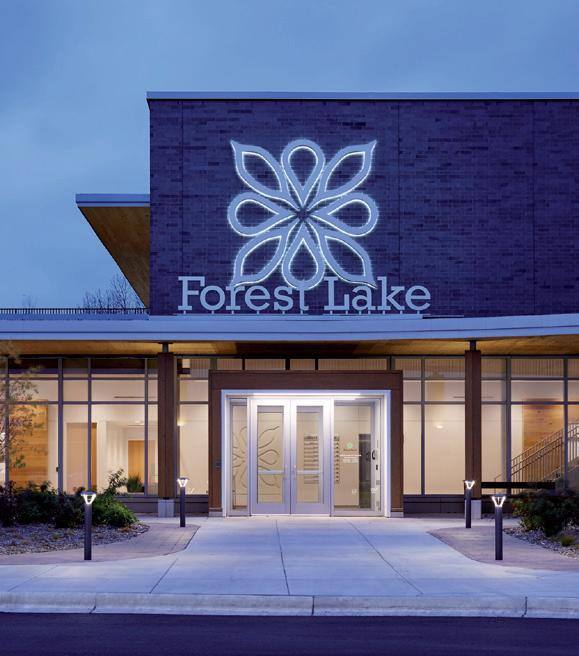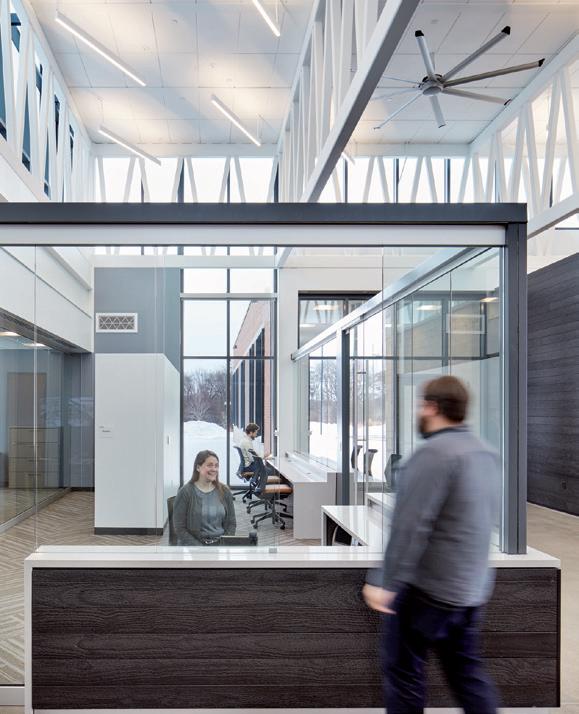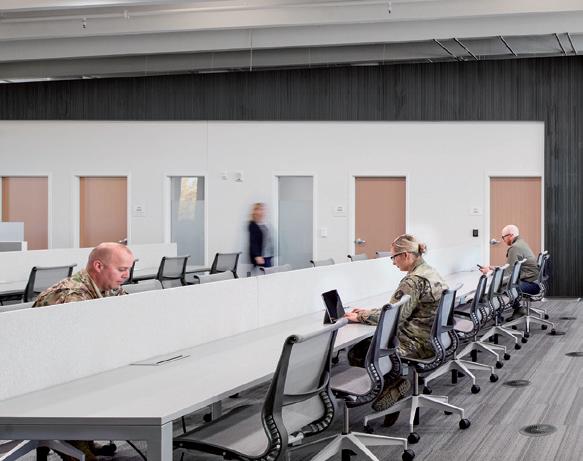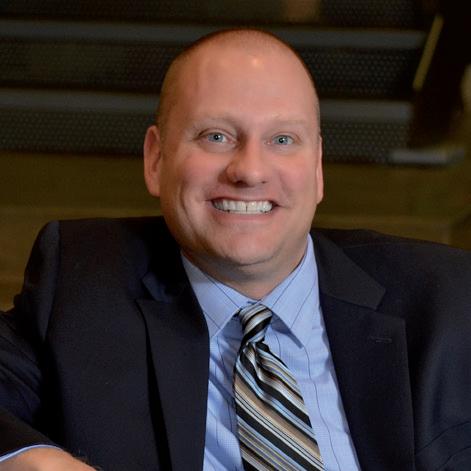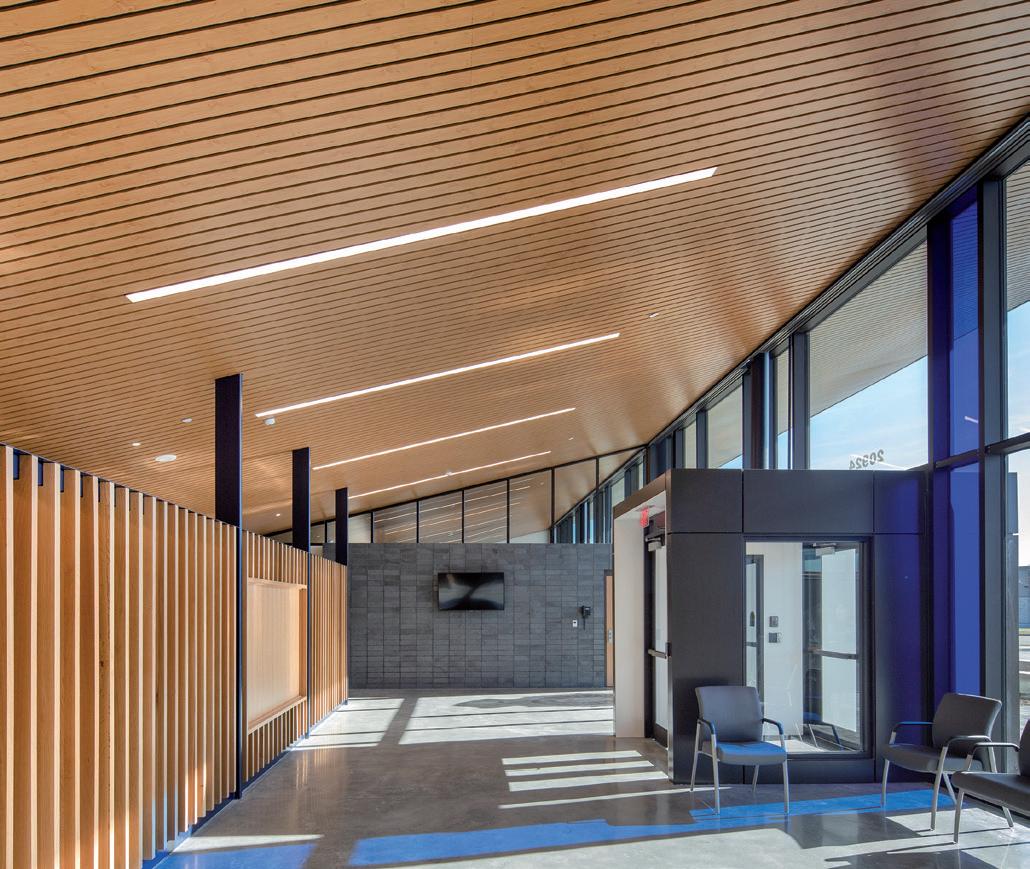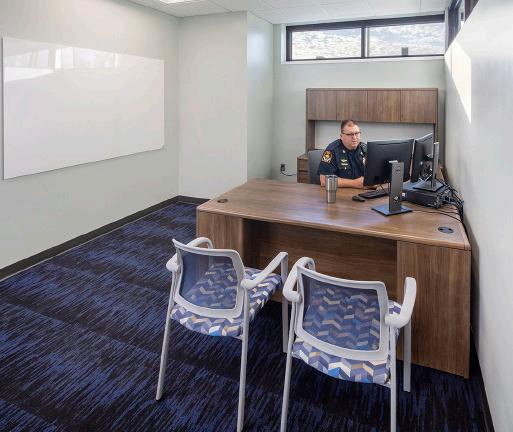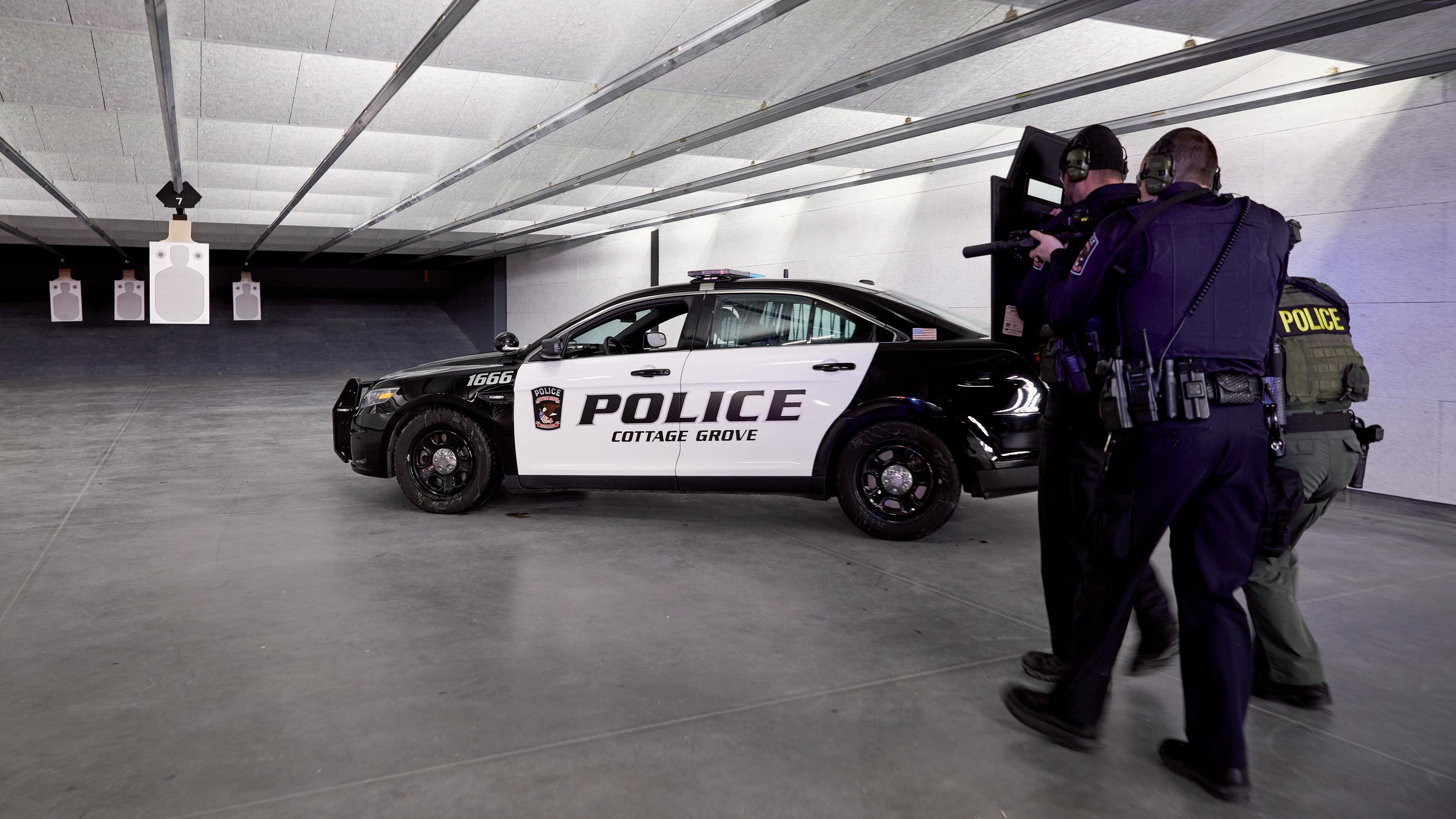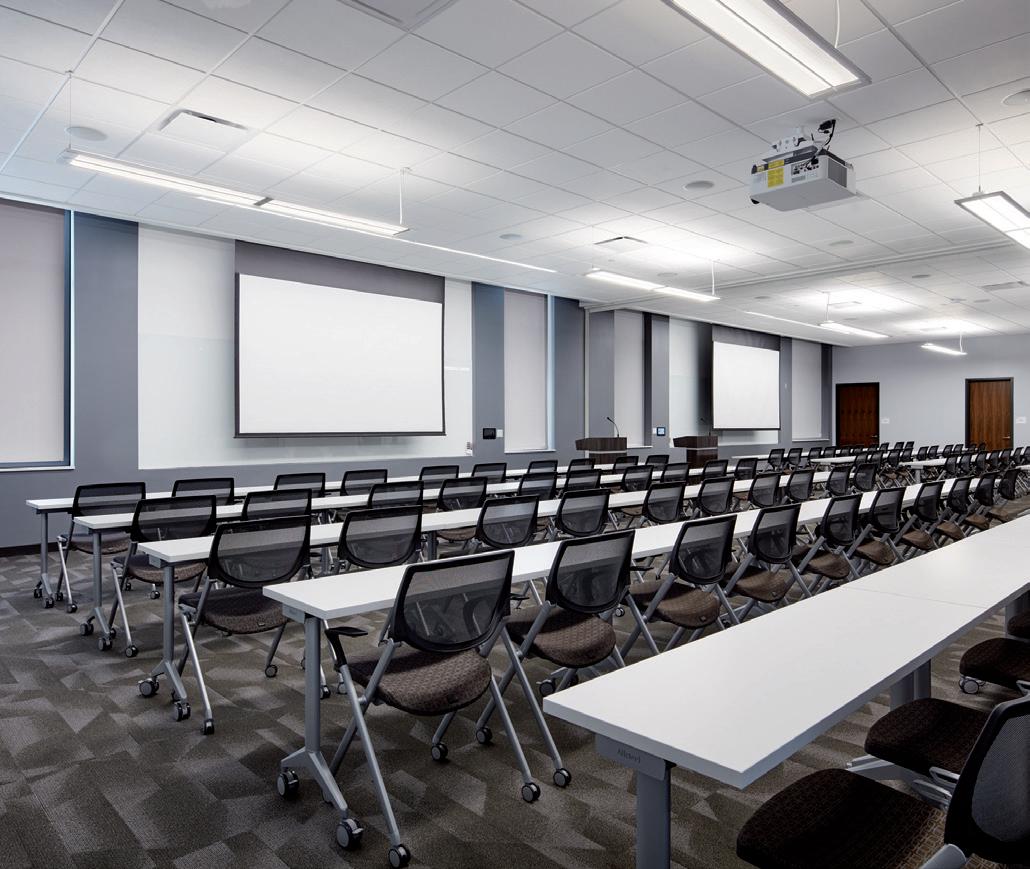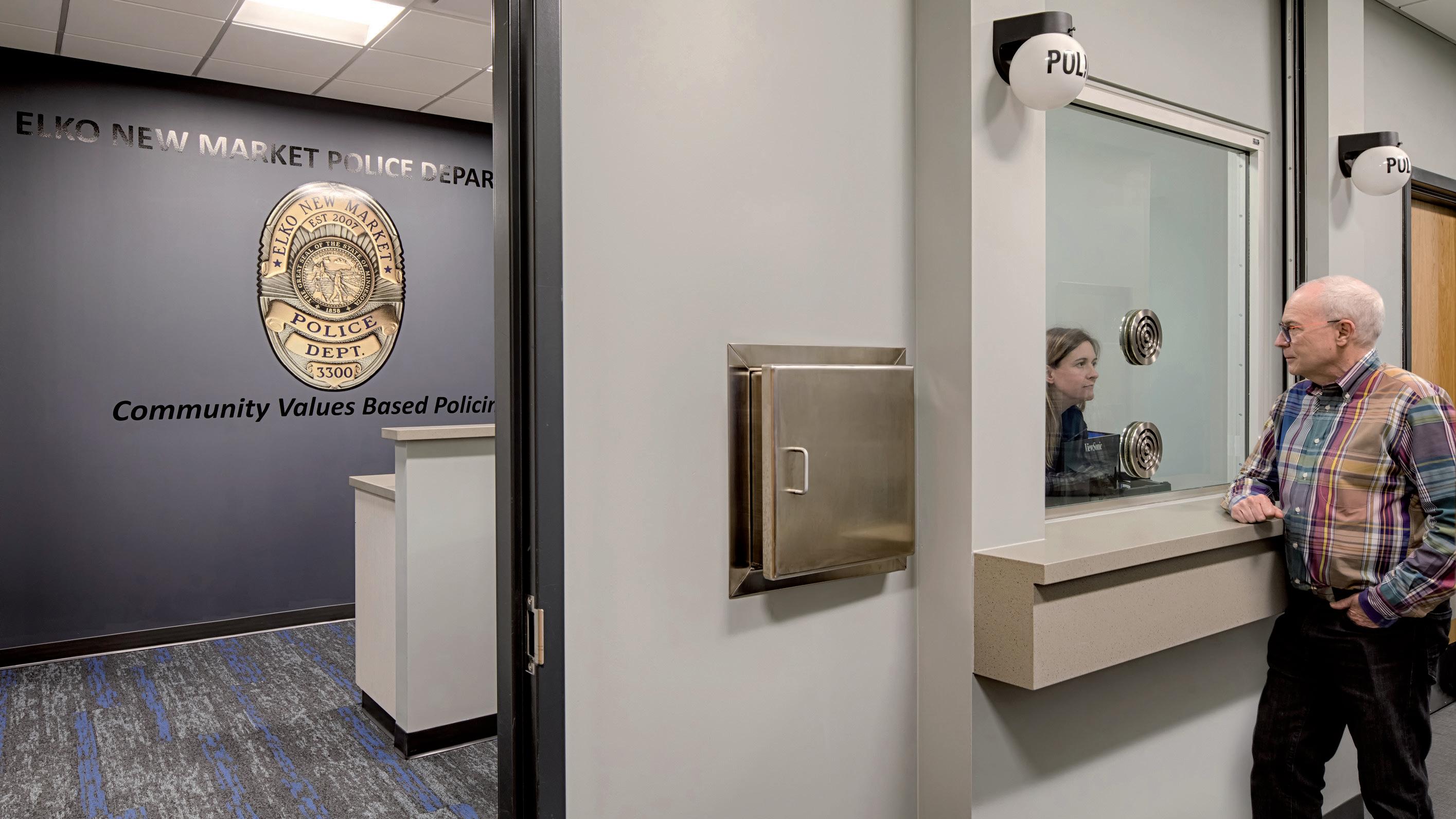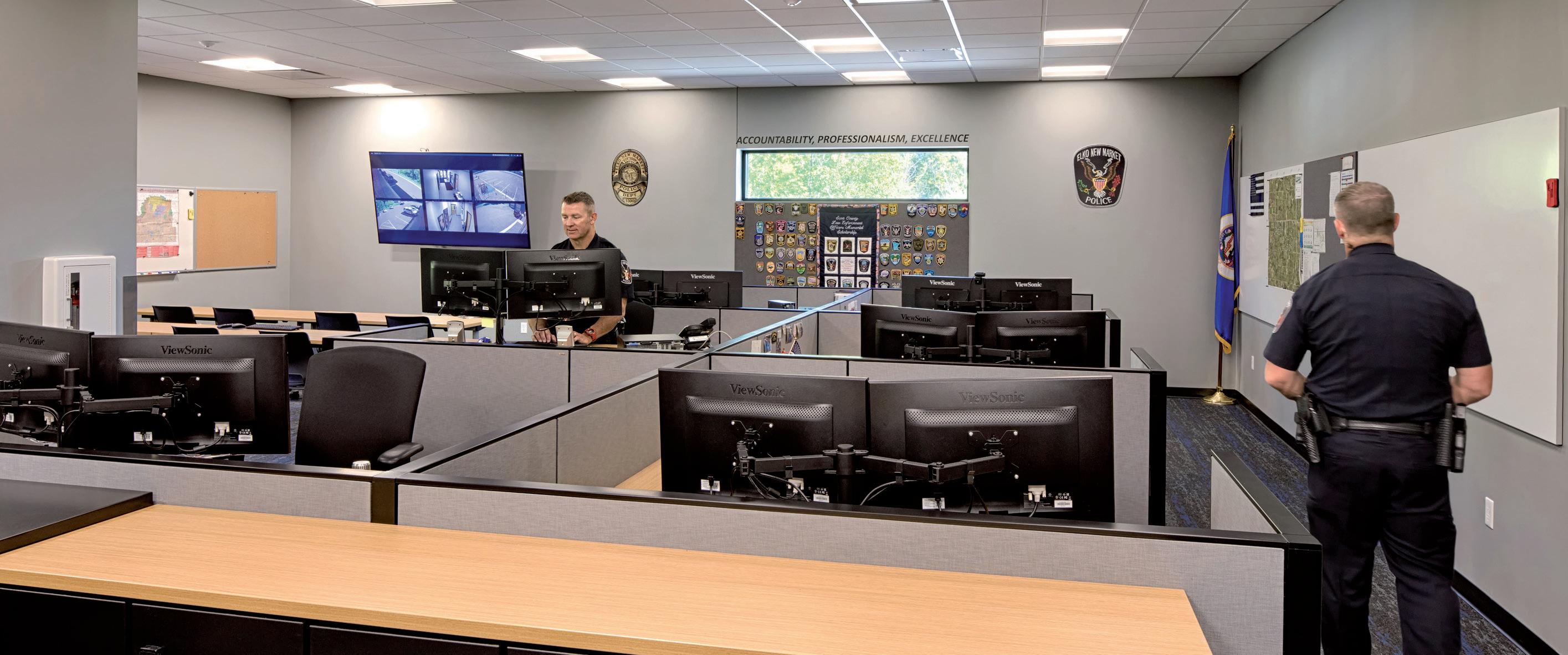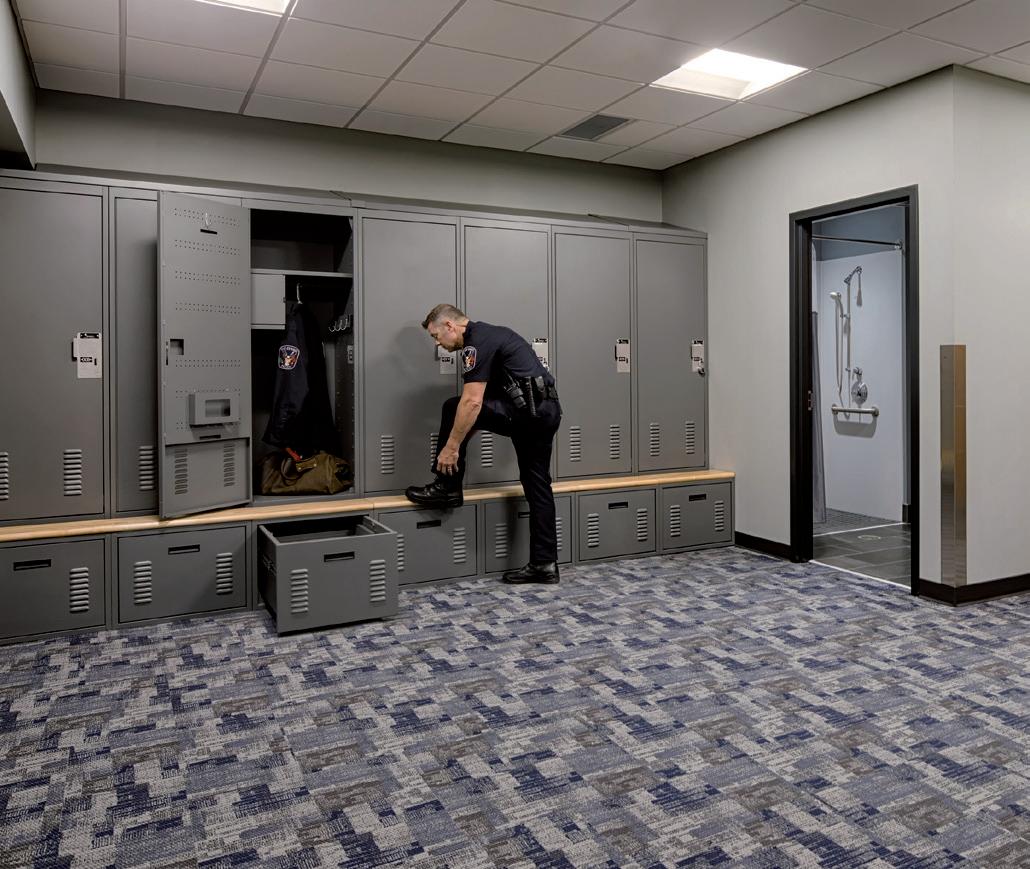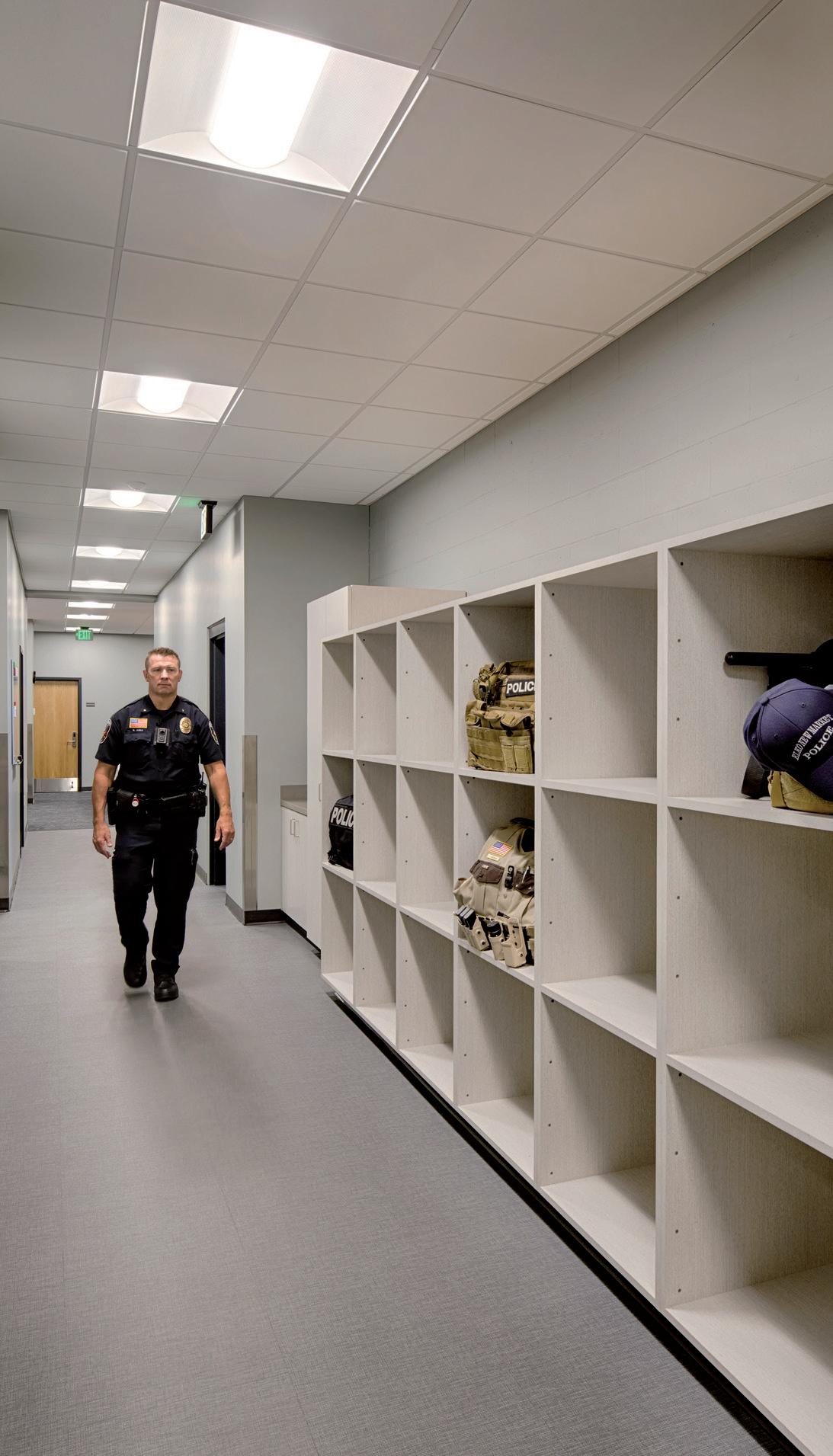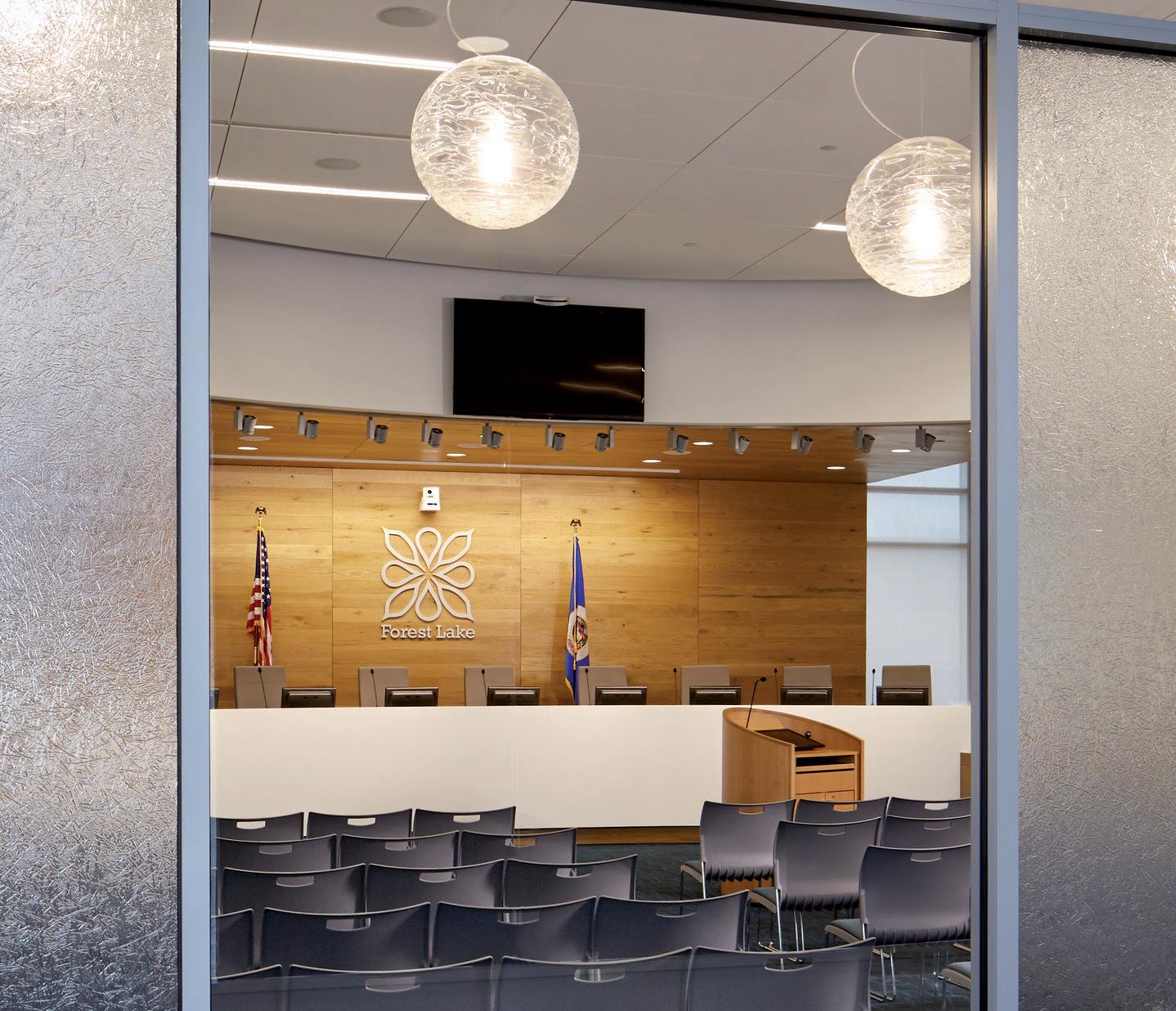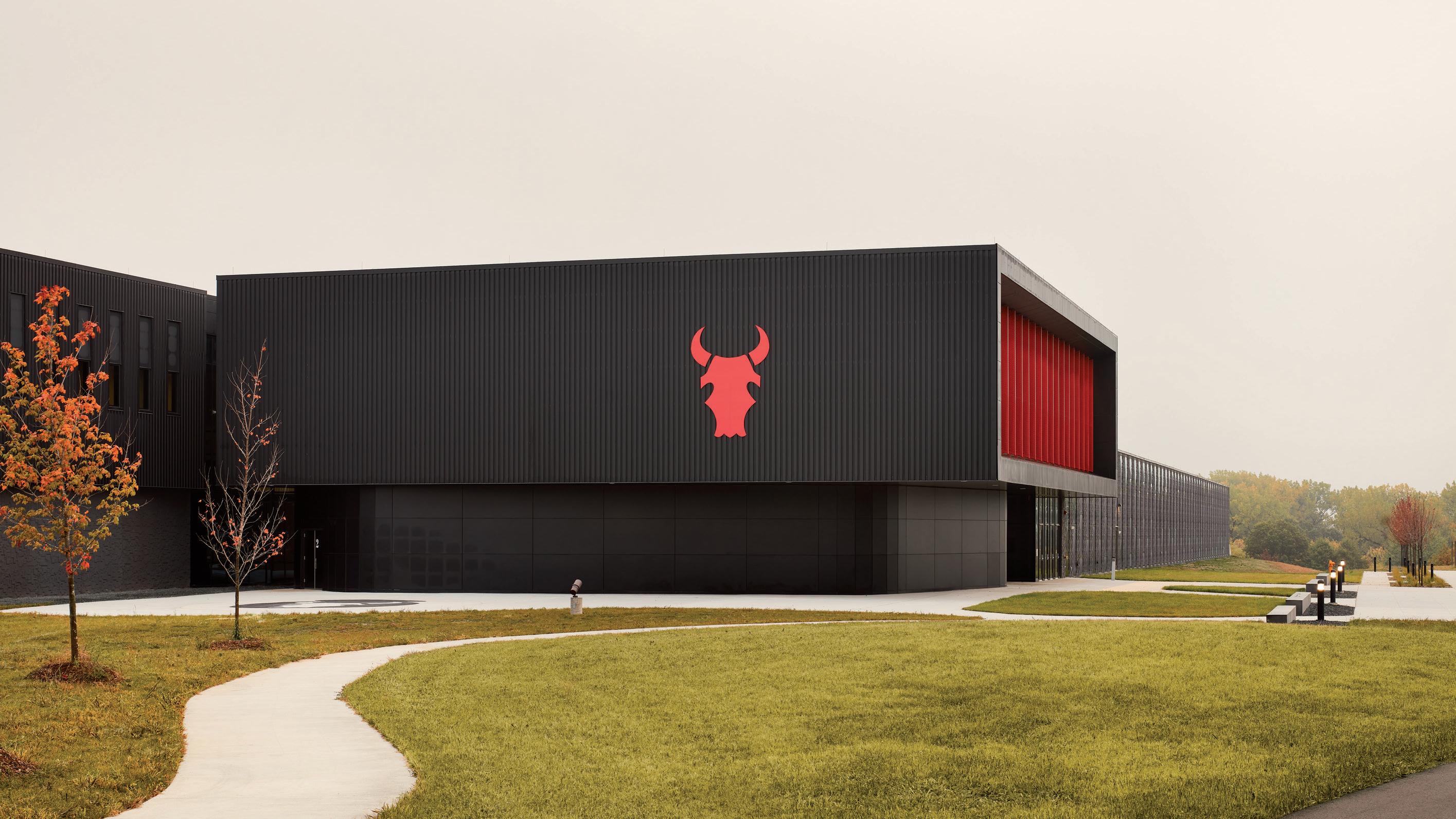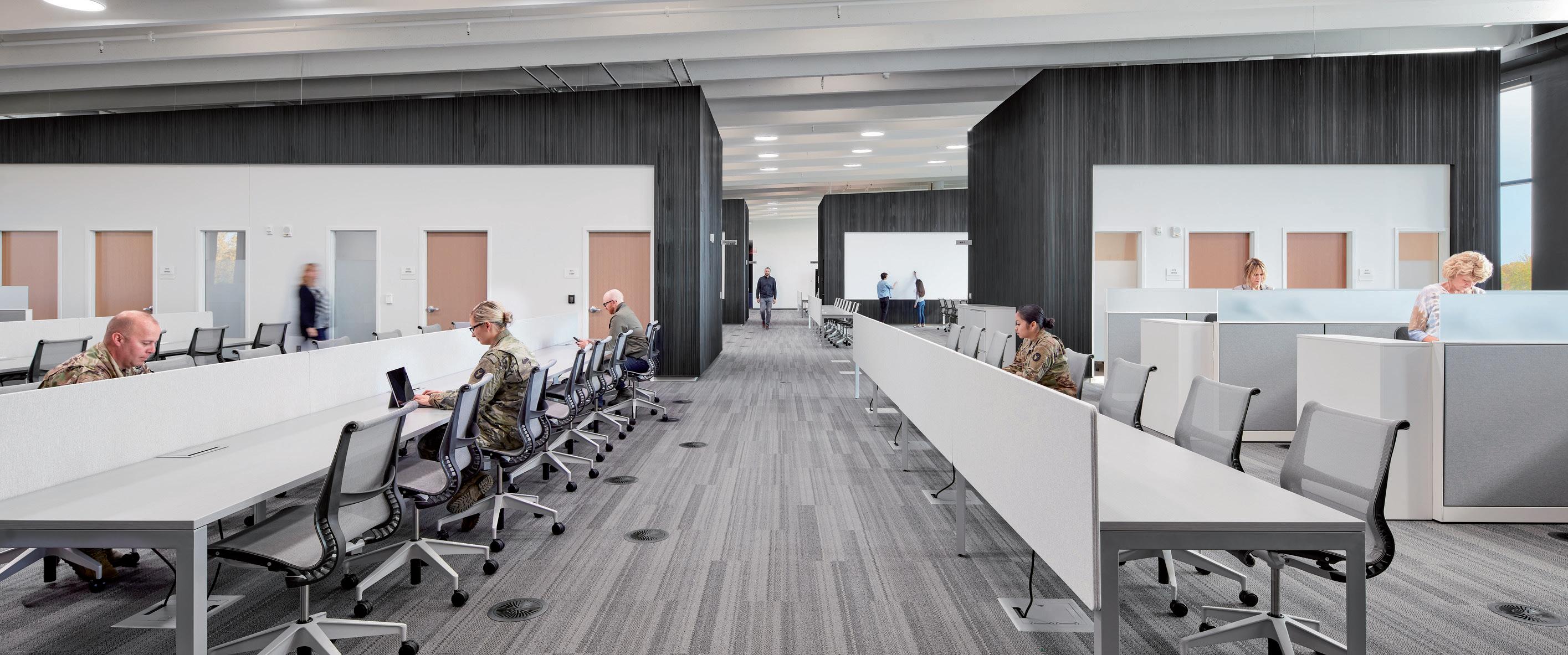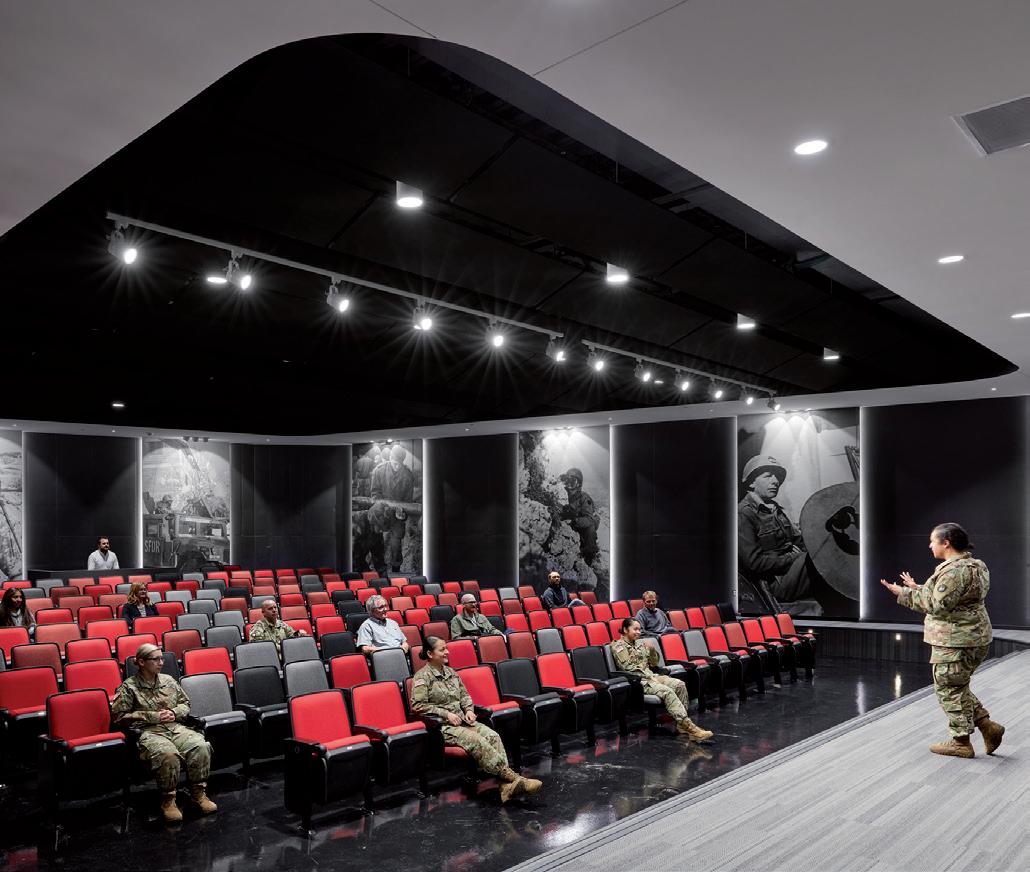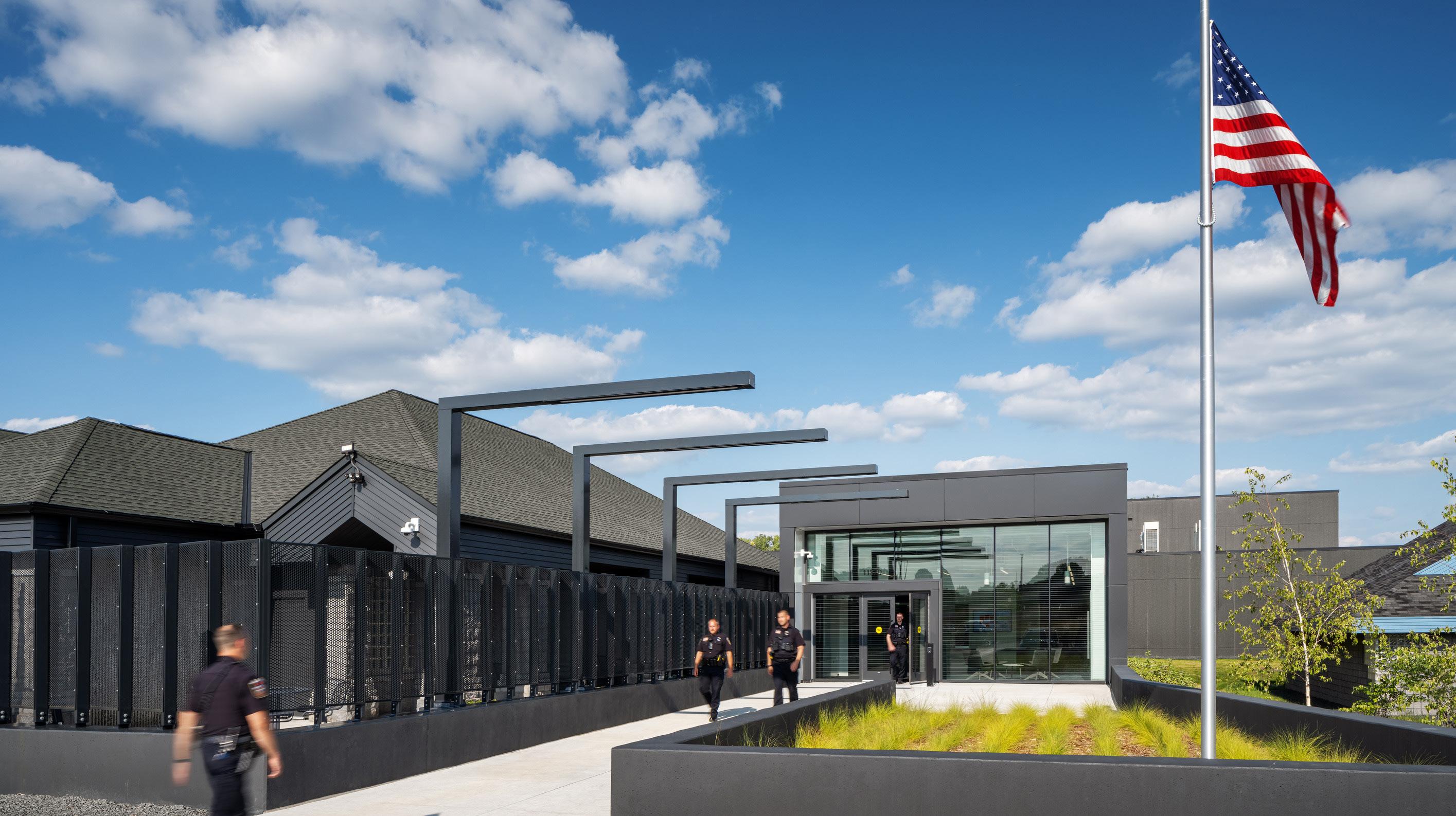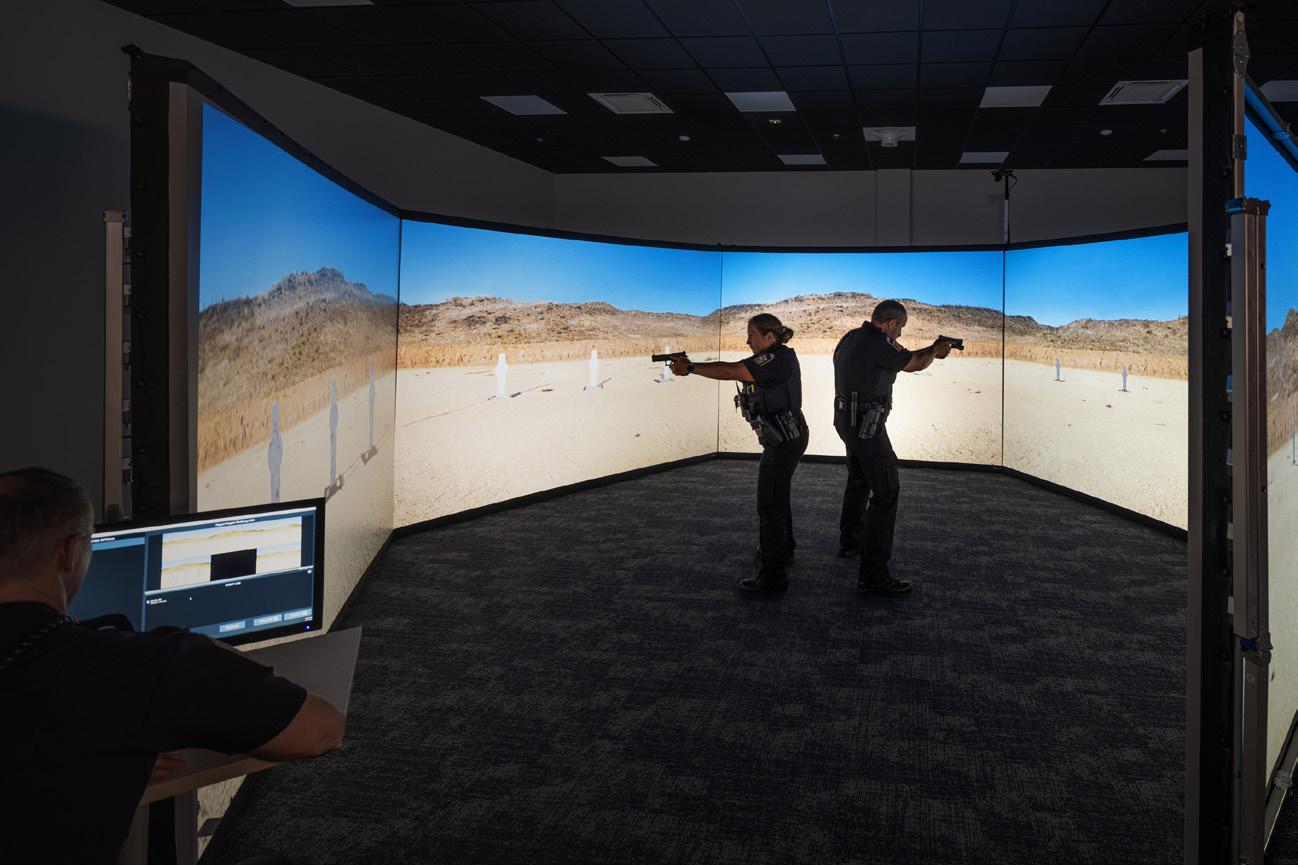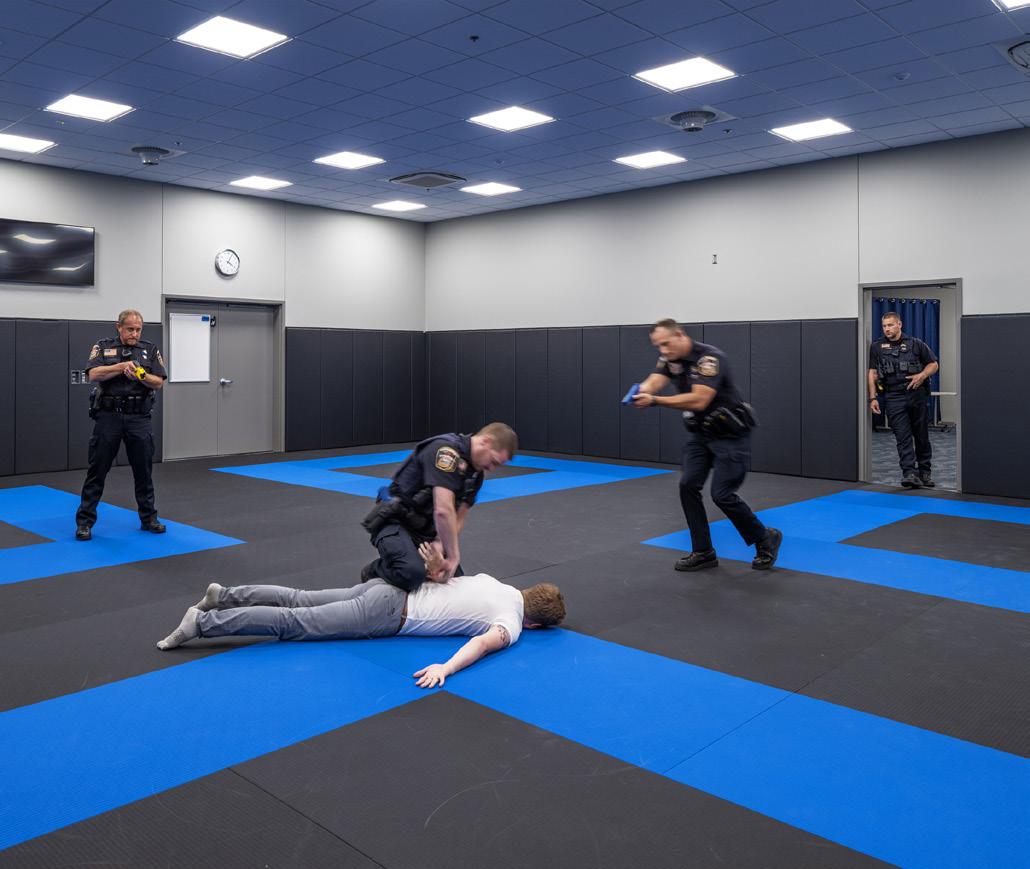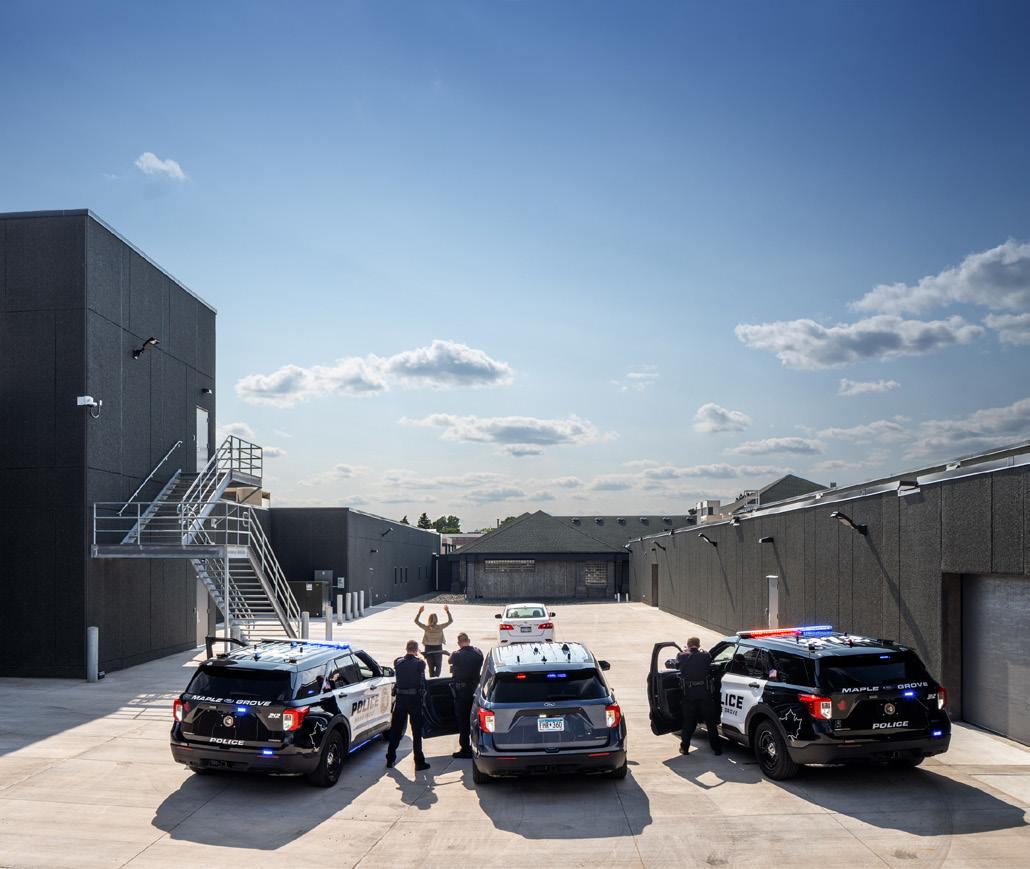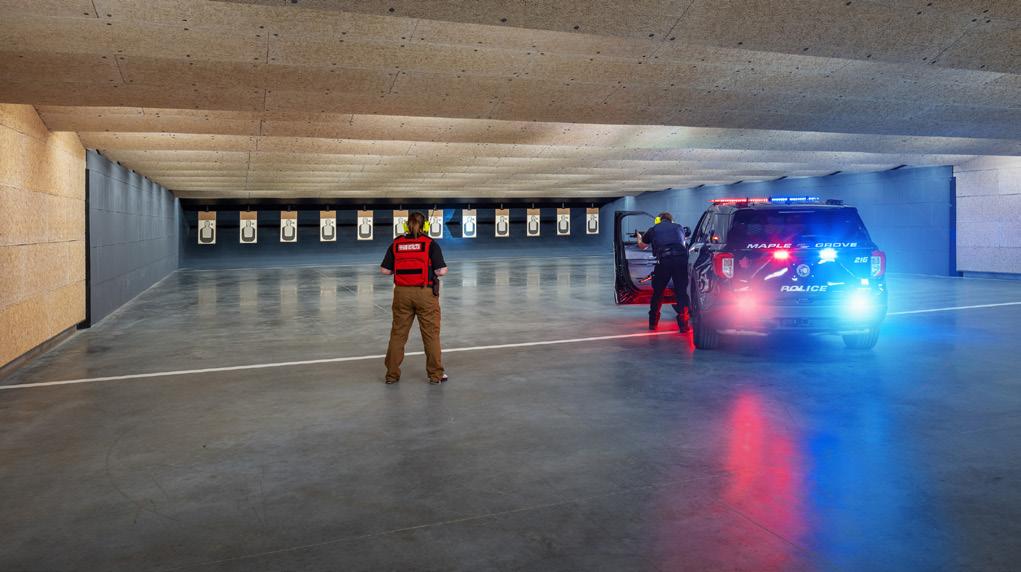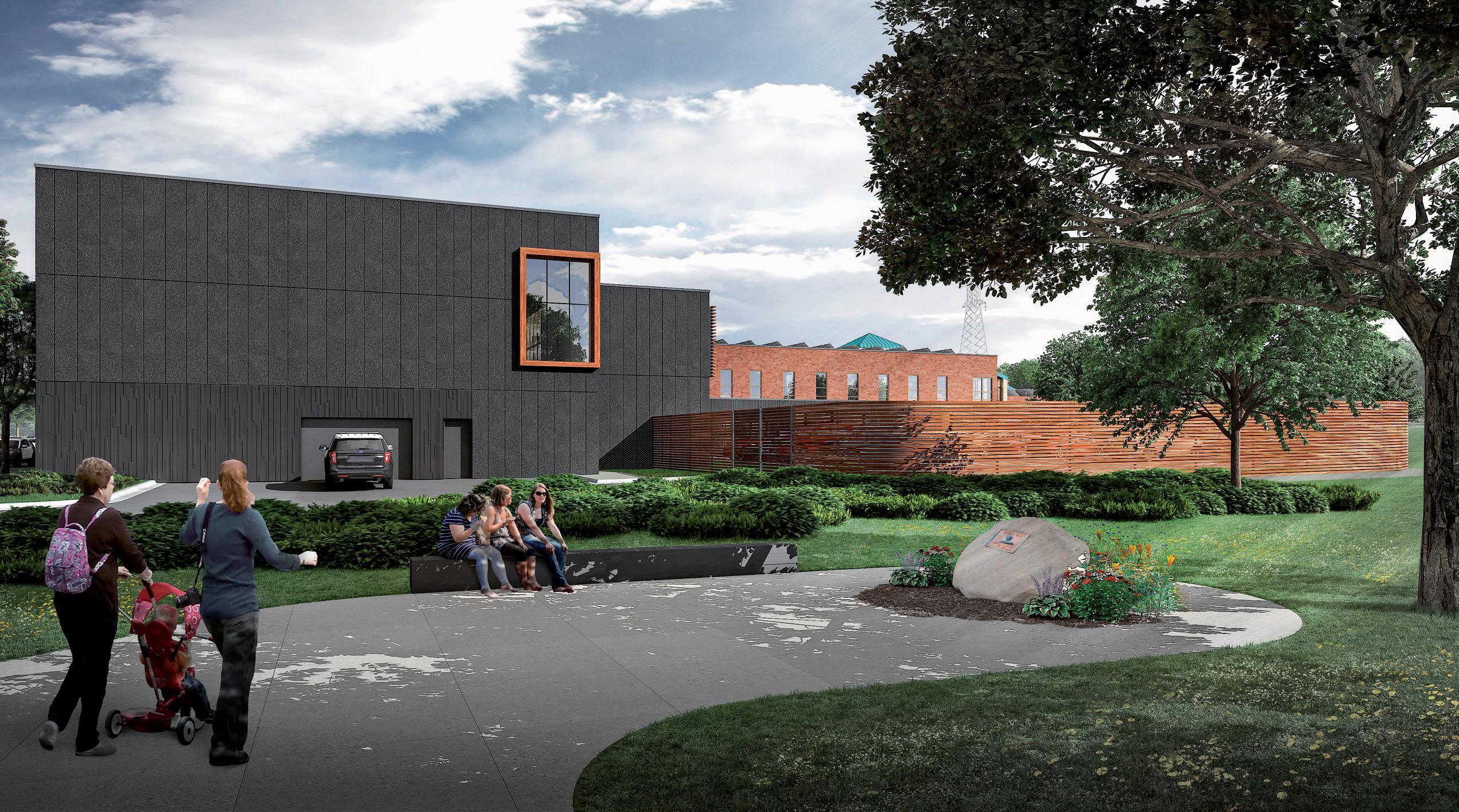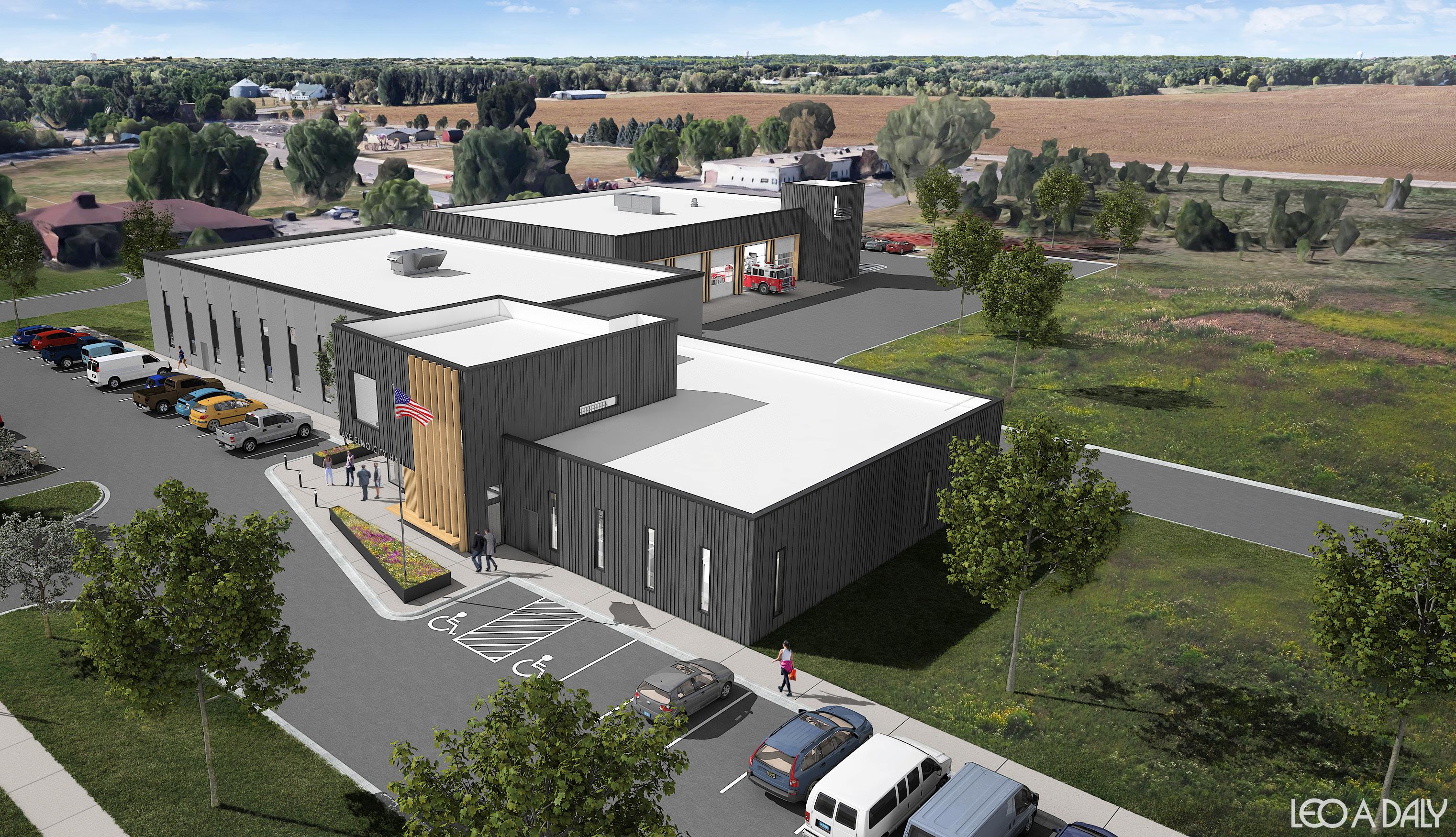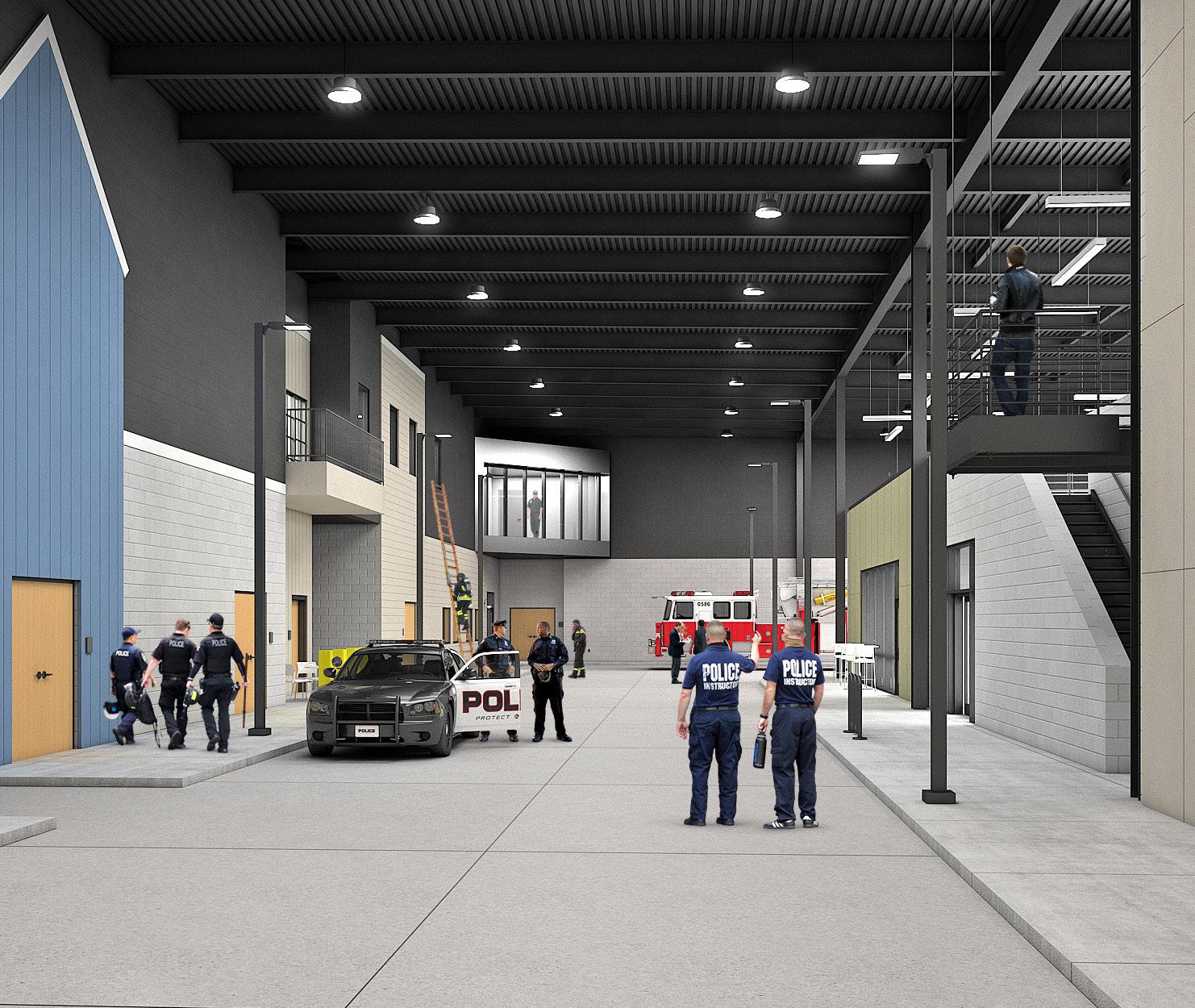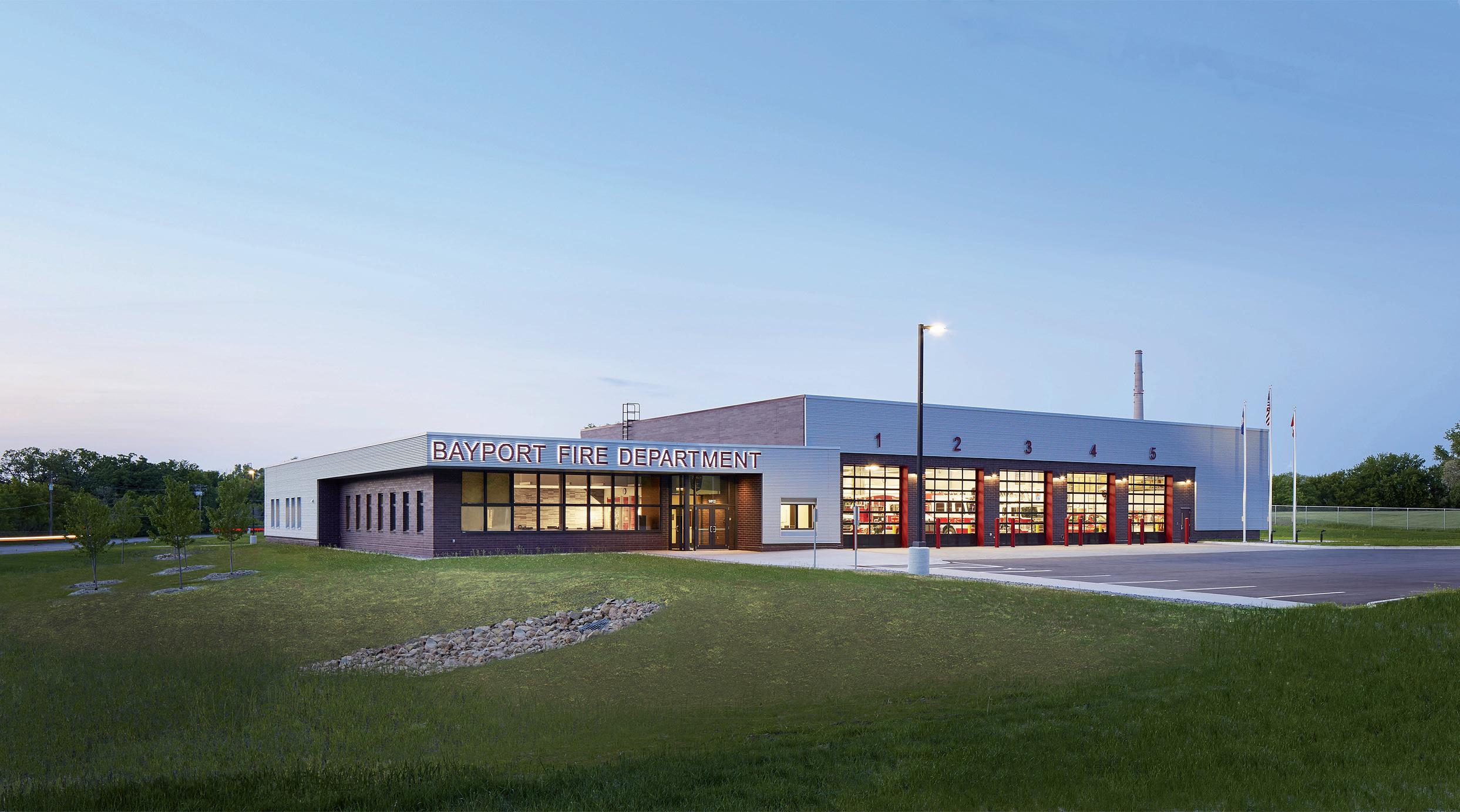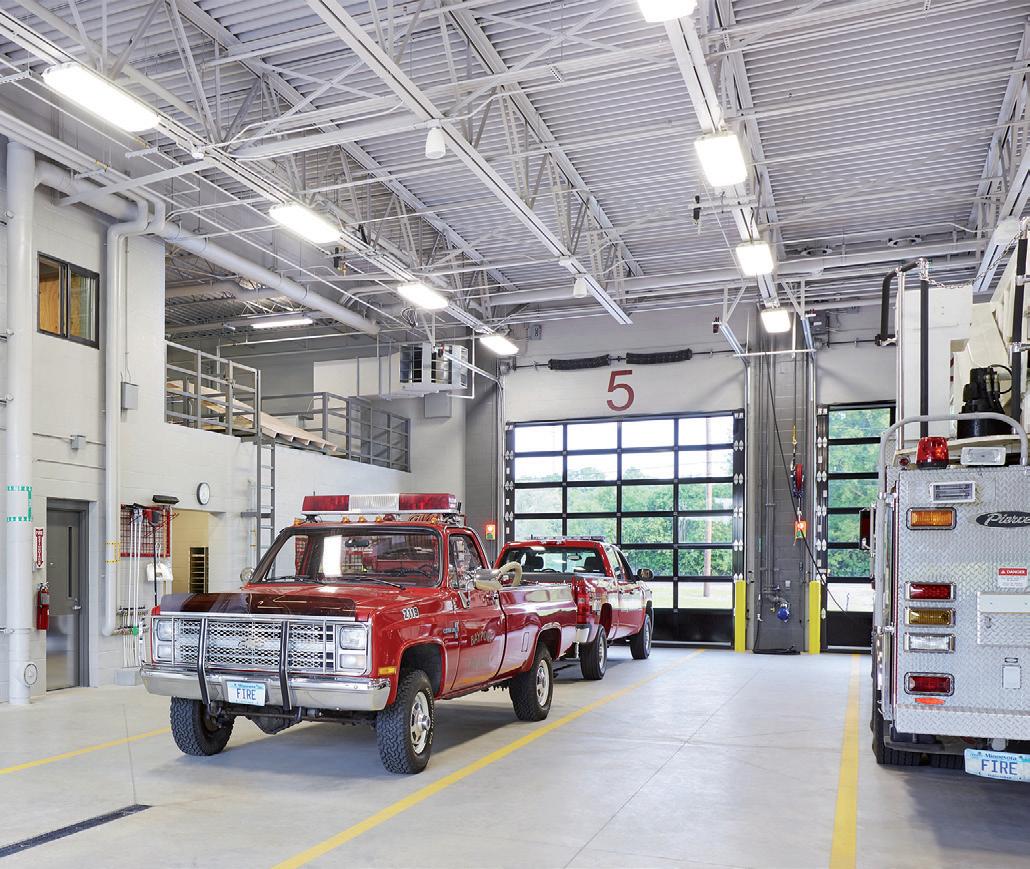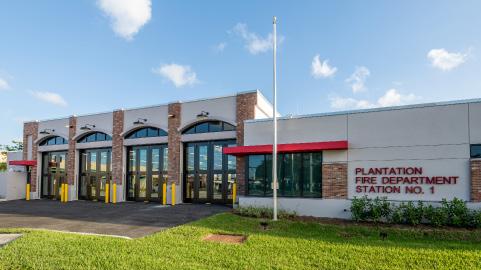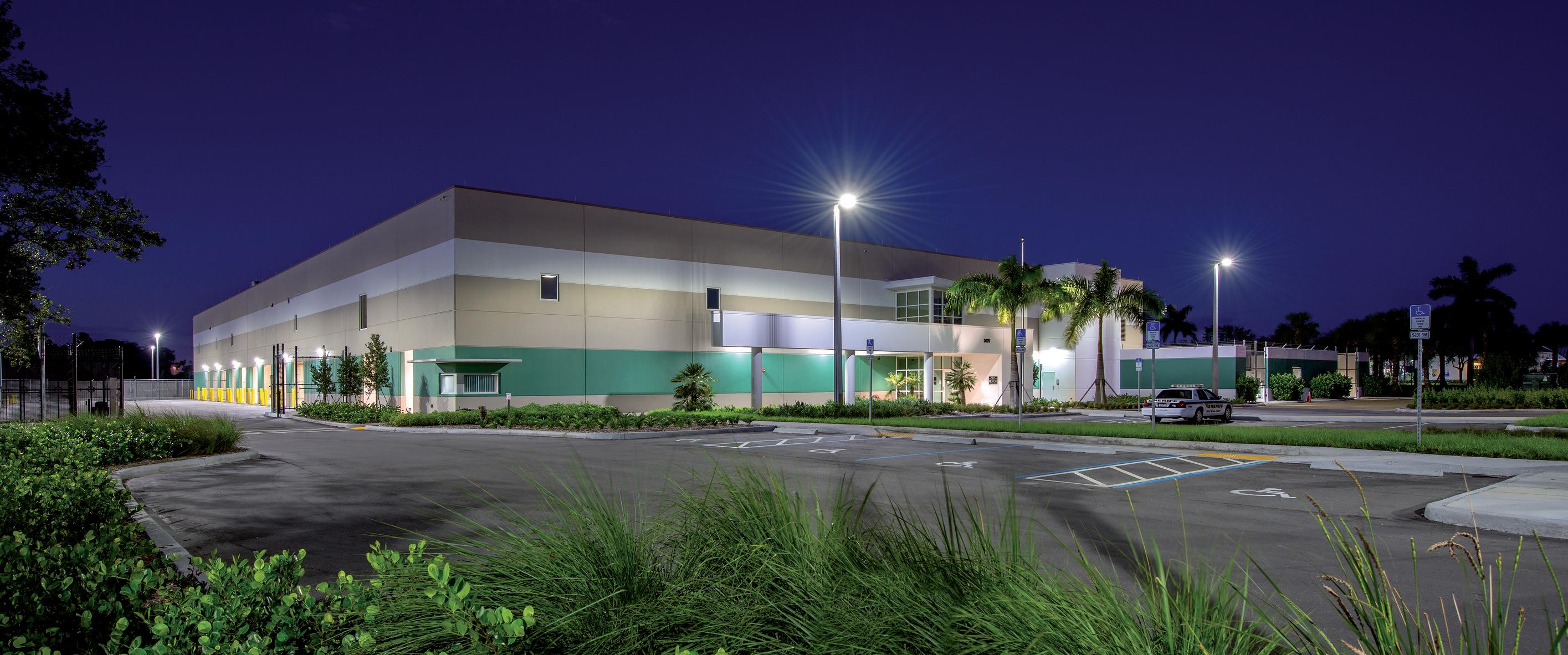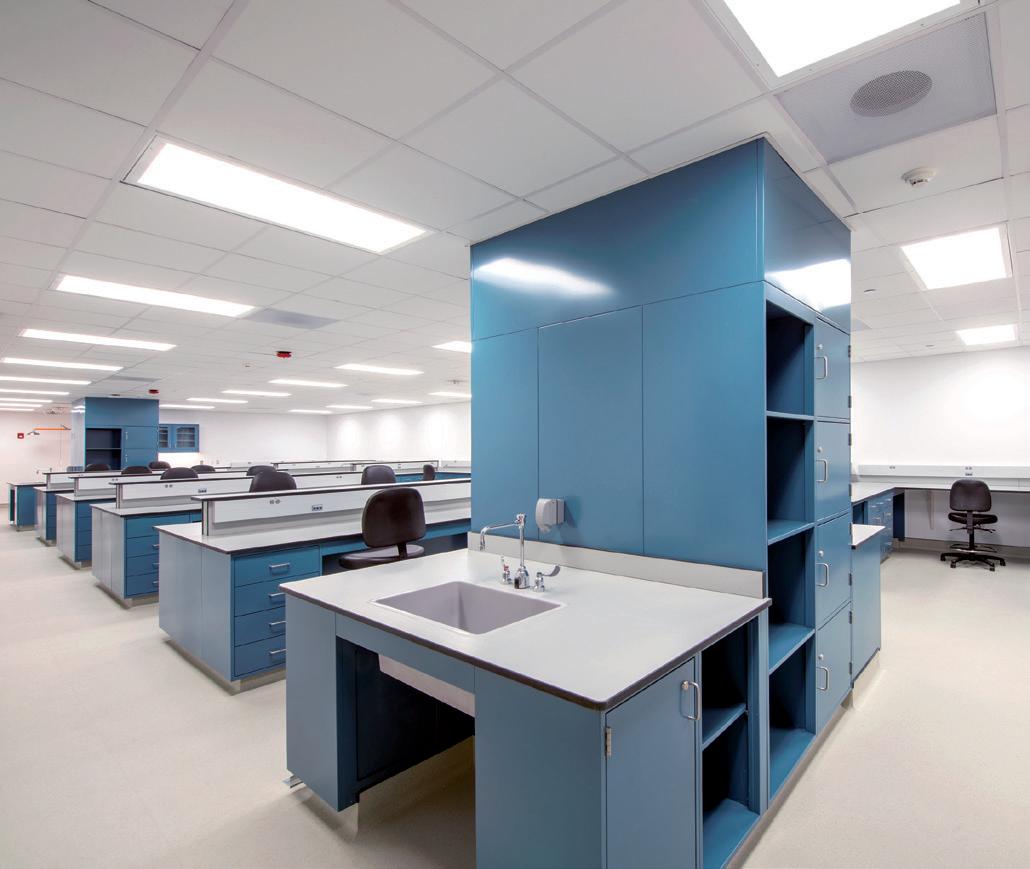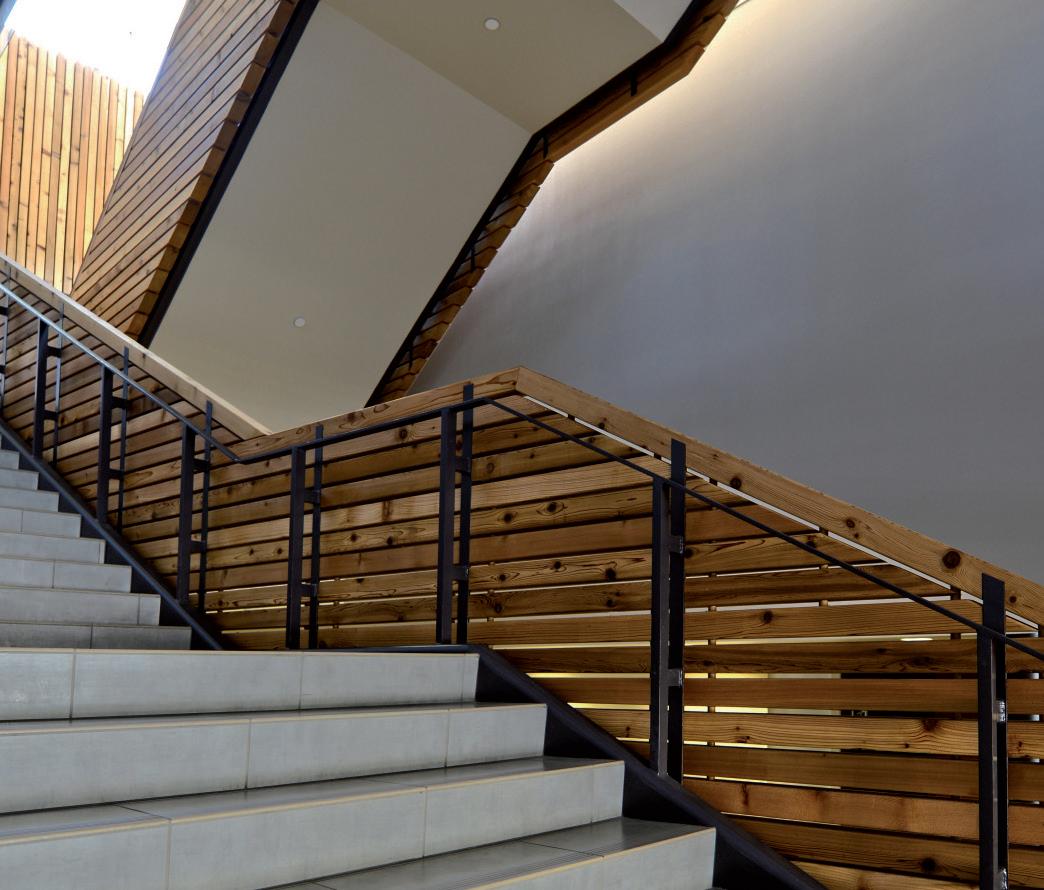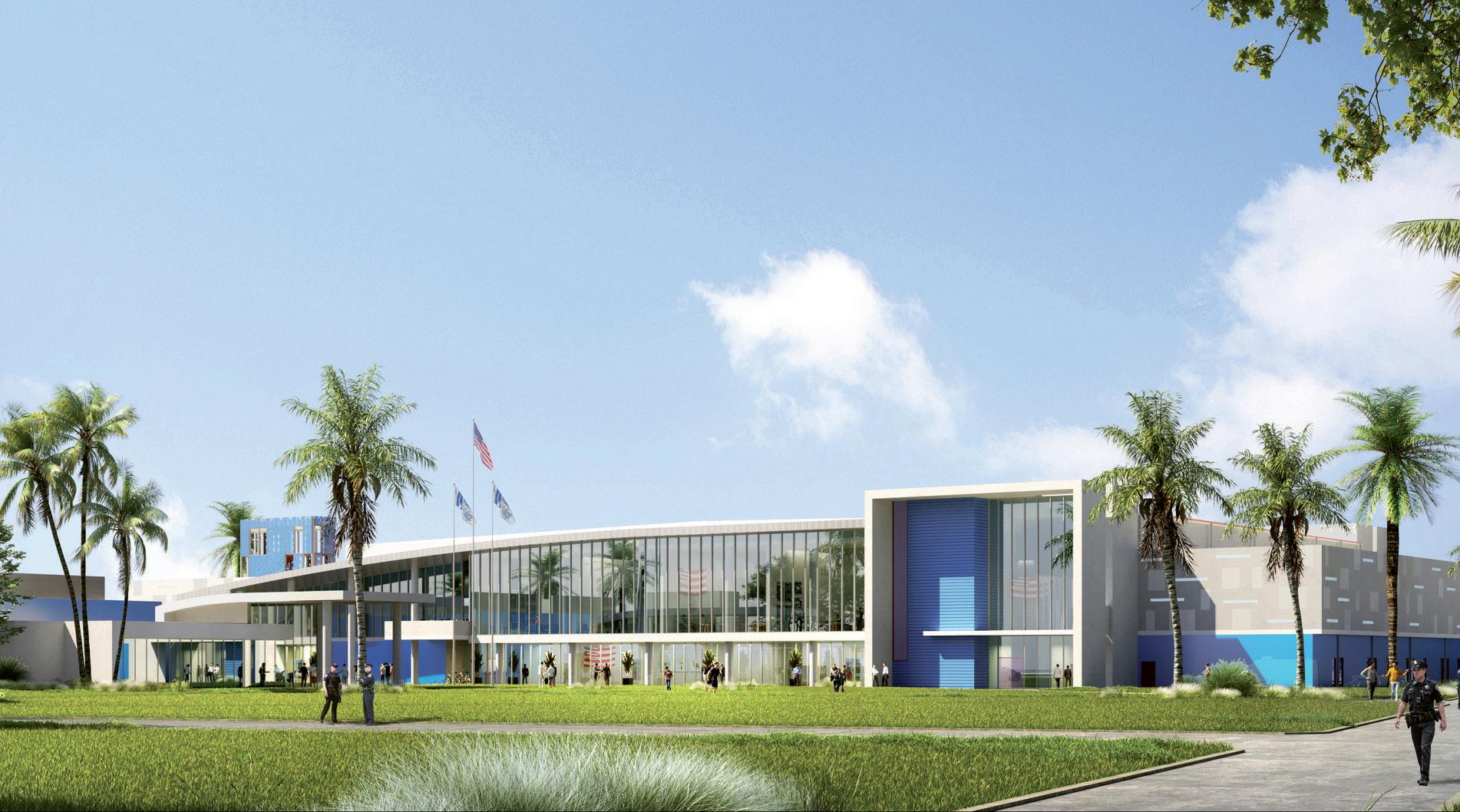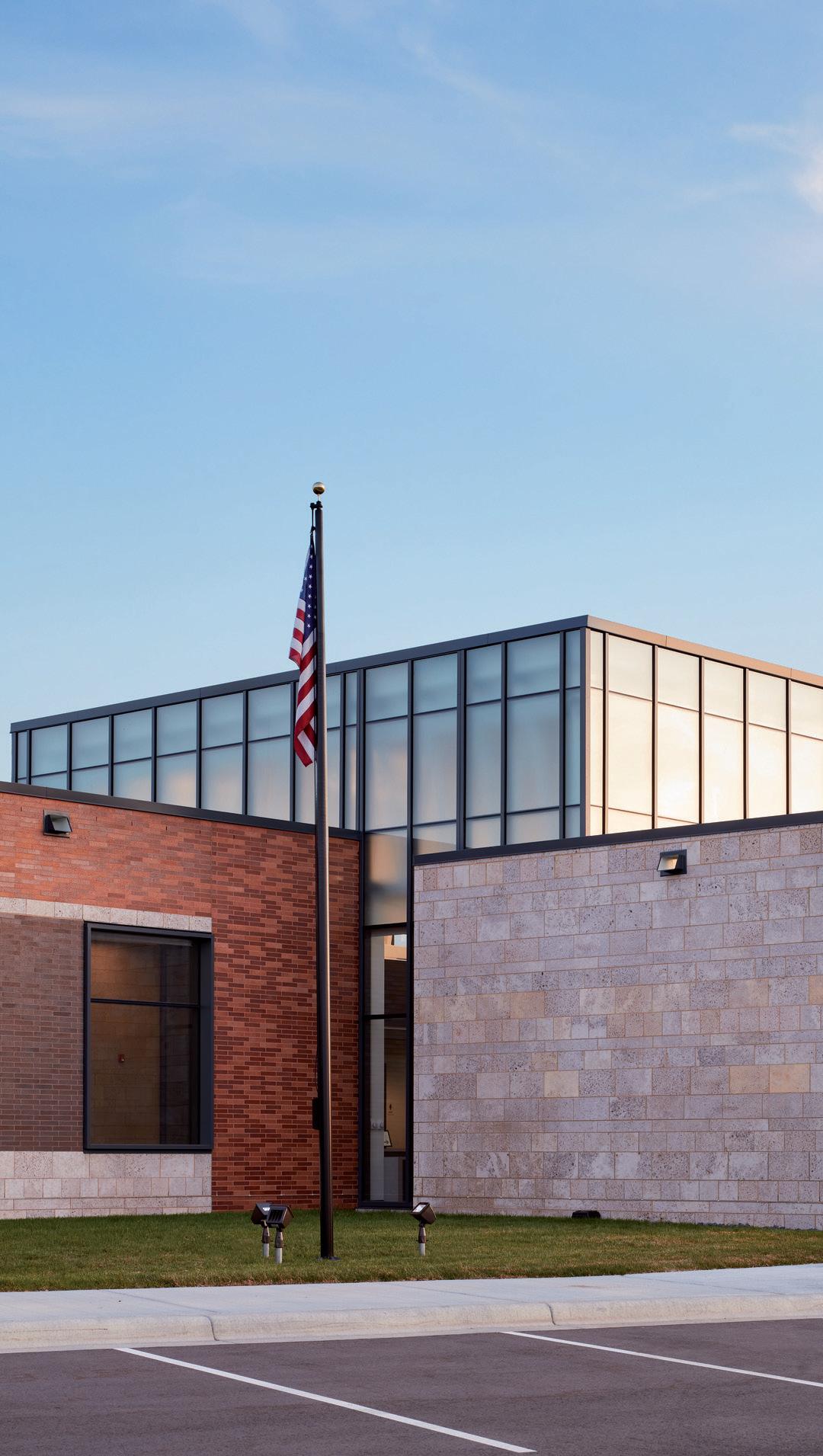Accelerating urbanization for cities in transition.
As planners, our role is to re-imagine our cities, and rethink how we design for people who work, live and play in them. We aim to create memorable places that inspire meaningful stories.
Master planning
Effective master planning is essential in defining your vision well into the future. LEO A DALY’s methodology and experience ensure the planning process focuses on a comprehensive analysis of the existing context and project needs to align with your business goals and objectives.
An integrated process
We start from the beginning with an integrated approach, including all disciplines and stakeholders to create a shared vision for the master plan.
Aligning expectations
We understand the importance of consensus building and the delicate balance of contributing and sometimes competitive factors.
An integrated planning practice impacting communities around the world.
LEO A DALY’s disciplined planning + urban design practice area focuses on:
• the study of cities, its urban fabrics and placemaking
• integration of technology, rapid urbanization and intangible economic growth
• value-added propositions focused on culture, wellness and lifestyle
Our collaborative approach to master planning focuses on aligning expectations with longand short-term strategies among all stakeholders throughout the entire process.
We utilize benchmarks based on broad experience and trends in various market sectors, combined with innovative ideas resulting in value-added, resilient solutions.
Los Angeles Mission College Campus Master Plan, CA, USA
Shenzhen Excellence Century Center Shenzhen, China
Sidra Medical Center Doha, Qatar
National Capital Planning Commission Memorials and Museums Master Plan, Washington D.C., USA
Harbourside Place, Jupiter, FL, USA
Security Forces Medical City, Abu Dhabi, UAE
Winona State University Education Village, MN, USA
Our team brings a passion for designing spaces built to be durable, operationally efficient and inviting.
Working with the public trust necessitates scrutiny of every aspect of design with safety, security, efficiency and flexibility in mind. LEO A DALY designs practical, durable civic spaces that allow government entities to serve the public good.
Over 25 years, I have come to know [LEO A DALY] as a dependable partner on a variety of county building projects.”
Bob Weisman, Administrator Palm Beach County, Florida
Designing for tomorrow
Sustainable design can provide long-lasting solutions to operational and structural inefficiencies. Additionally, flexible environments allow local governments to adapt to changing technology, staffing needs, regulations and functionality well into the future.
Safety and security
Our design for public buildings must emphasize safety and secutiry, safeguarding the public as well as those who serve
and protect. Paramount to safe, secure design solutions are separate access routes for various groups entering and moving around a secure facility.
Maintaining clear wayfinding and signage also contributes to feelings of security among building users. At the same time, these buildings must be welcoming and open for public access.
Public safety
Designing public safety facilities requires a careful balance between the responsibilities of law enforcement and the public at large. The building must be functional and efficient for the employees who use it on a daily basis and must also be affordable, practical and sustainable for the public.
Conducting exhaustive feasibility studies allows LEO A DALY to understand the needs of law enforcement officers and the community. We do not use a one-size-fits-all approach; rather, we ask the right questions and reach appropriate solutions with stakeholders to create effective, responsible, safe and secure spaces.
Administrative buildings for government entities and public institutions need to be practical, durable and efficient while also providing the comfort and aesthetics of a modern workplace environment.
LEO A DALY’s design experience goes beyond attractive to engaging. Our approach results in enjoyable and practical facilities for both patrons and employees that reduce stress and create notable operational efficiencies. The challenge of designing spaces that are built to be durable and operationally efficient, while also inviting, is one we embrace wholeheartedly. We strive to turn obstacles into opportunities, resulting in profitable solutions long after implementation.
Respective Clients
Anoka County, MN
Broward State College, Davie, FL
Carver County, MN
City of Austin, TX
City of Bayport, MN
City of Beaumont, TX
City of Buda, TX
City of Burbank, CA
City of Chadron, NE
City of College Park, GA
City of Conroe, TX
City of Cottage Grove, MN
City of David City, NE
City of Doral, FL
City of Fayetteville, GA
City of Forest Lake, MN
City of Hastings, MN
City of Miami, FL
City of Miami Beach, FL
City of North Port, FL
City of Richfield, MN
City of San Antonio, TX
City of Sterling, IL
City of Tampa, Tampa, FL
City of Woodbury, Woodbury, MN
Fort Bend County, TX
Hennepin County, MN
Honolulu Police Department, Honolulu, HI
Miami-Dade College, Miami, FL
North County, FL
Omaha Police Department, Omaha, NE
State of Maine, Augusta, ME
State of Texas, Austin, TX
Palm Beach County, FL
Palm Beach Sheriff’s Department, West Palm Beach, FL
Palm Beach State College, Lake Worth, FL
Pennington County, SD
Ramsey County, MN
Meet our civic team
Multiple voices, numerous perspectives and true talents enrich our vast portfolio of work. The richness in artistry and collaboration is woven into the core of our practice, guided by visionaries whose leadership inspires great design.
AIA, NCARB, LEED AP
Vice President, Managing Principal CAMcCleary@leoadaly.com
Cindy has focused her 23-year career on public architecture. An expert in visioning and consensus building, she is particularly adept at guiding and facilitating special interest groups, public sector clients and multiple stakeholders to realize strategically-driven results. Her experience as a programmer and planner of public and academic libraries, civic and educational facilities, city halls, police, fire and community buildings, courts, law enforcement and police forensic facilities has earned her a reputation for advanced thinking and strategically driven design processes.
Associate, Senior Project Manager TBLavold@leoadaly.com
Todd has 24 years of experience in the design and management of a wide variety of project types, providing predesign, design and construction documentation as well as owner and consultant coordination as a design lead and project architect. He has a depth of project experience in municipal projects, including: public safety training and headquarters facilities, fire stations, evidence facilities, community centers, athletic facilities and city hall and administrative buildings.
Senior Associate, Market Sector Leader CMRupert@leoadaly.com
Chris has 22 years of experience working on a variety of urban design studies and master planning efforts, serving as project coordinator and public involvement task leader. Her responsibilities include sustainable design site planning; programming; quantitative analysis; design guidelines; inventory preparation; LEED® design and documentation; field surveys; data collection; coordination and contracting of subcontractors; preparation of project scope, schedule and budget; development of public outreach materials; and facilitation of public meetings. Chris is registered with the American Institute of Certified Planners.
Keenan Sean Hockman AIA, NCARB, LEED AP BD+C Rauzia Ally AIA, NCARB
Senior Designer MPKeenan@leoadaly.com
Matthew brings 18 years of experience in government facility design and construction. He leads projects in the role of project manager and designer focusing on planning, coordination of the team and the delivery of our work. Matthew’s experience includes county and municipal facilities, administration buildings and public safety training and headquarters facilities. Matthew takes pride in the quality of our work and professional service.
Senior Associate, Sr. Project Manager SMHockman@leoadaly.com
Vice President, Managing Principal RRAlly@leoadaly.com
Sean has 27 years of experience with a focus on civic projects. Sean excels at implementing strong design solutions for government and municipal clients. He facilitates and coordinates the planning, programming, design and construction of projects and manages construction delivery systems integrating project scopes, schedule and budget from planning through owner occupancy. An excellent communicator, Sean is a well-rounded leader who has successfully brought the most complex projects to completion on schedule, within budget and with maximum client satisfaction.
Rauzia has 31 years of experience and is a proven and ambitious design leader with a wide-range of experience in various interrelated disciplines, including art, design, construction, real estate, visioning, innovation and teaching. She is facile at managing the design and construction of concurrent renovation and construction projects while providing the technical expertise in public space making, architectural innovative design, and construction management. Dedicated to building strong relationships with stakeholders, Rauzia is a design leader adept at understanding group dynamics and managing design teams that perform.
Cindy A. McCleary
Todd LaVold AIA
Chris Rupert AICP, LEED AP
Matthew
City of Omaha, Police Department, West Precinct
The Omaha Police Department needed to expand its presence in West Omaha as Omaha’s population continues to grow westward. The city sought a modern facility to house a growing police force, and one that promoted OPD’s “community policing” philosophy.
Our expertise and experience in public-safety design helped OPD leadership hone its vision for the facility during a series of pre-design workshops. We led architecture and engineering services for the 36,000-SF facility, which houses three police units, including emergency response, traffic investigations and patrol.
Designed for community policing
Amenities such as a community room, public workstations and Wi-Fi invite press members and neighborhood organizations to share space and engage with police, fostering transparency and partnership. Warm and inviting interior finishes adorn the precinct’s public spaces, which are smartly aligned with entrances to provide staff with clear lines of site. When a community member enters the precinct, he or she enjoys comfortable surroundings, straightforward access to police services and easy network connectivity that facilitates report filing and finding information.
Construction costs for the West Precinct came in under the $10 million budget at about $8.2 million, and on-schedule, following a sophisticated design-refinement process.
“It was a pleasure working with the architects at LEO A DALY. They came up with a state-of-the-art facility, tailor made to suit Omaha Police needs.”
- Omaha Police Chief Todd Schmaderer
The design team worked closely with OPD leadership, the city’s public works department and the mayor’s office to precisely program OPD’s newest and westernmost precinct. During this process, our designers evaluated dimensions, function, proximities, visibility and access.
Flexibility supports growth
As programming and design progressed, the project team priced materials and labor at key stages. The precinct’s resulting, highly functional interior features flexible spaces capable of being repurposed as needed. Multipurpose rooms are equipped for many types of training, because training is frequent and ongoing for all public-safety employees.
Details enhance security
To address concerns about being “targeted,” which are shared by police officers nationwide, high window placement eliminates visibility of interior work while still allowing occupants to benefit from workplace daylighting. Outside, a concrete “seating wall” forms a perimeter around a public plaza adjacent to the precinct’s front entrance, simultaneously providing protection and buffer space while encouraging conversations.
Behind the scenes, functional details unseen to most include wide corridors that prevent individuals from blockading hallways, and hidden “distress” call buttons placed throughout the facility. Work areas use durable, industrial finishes to stand up to the rigors of police work in all seasons.
HERO Training Center
Cottage Grove, Minnesota
Owner
City of Woodbury/Cottage Grove, Minnesota
Size
41,056 SF
Cost
$18 M
Scope
Architecture, civil, structural, electrical and mechanical engineering, interior design and construction administration
Completion Date
October 2019
The Public Safety agencies of Woodbury and Cottage Grove identified a serious lack of training facilities adequate to meet the ongoing needs for training in the region. LEO A DALY’s design for the new construction HERO Center fulfills the facility space need with intent as a multi-use public safety training center for project partners, members and customers where they may share resources for pre-employment, continuing education and in-service training for law enforcement officers, firefighters, emergency medical service providers and students.
The design forms five “training pod environments” with features including:
• Training facility with classroom/office spaces (two 50-student classrooms, one 100-student classroom and two small breakout rooms)
• Indoor vehicle training spaces
• Simulation labs and forensics labs
• Scenario training spaces
• Multi-type/multi-degree firing ranges (4 lane/50 yard fixed position and 12 lane/50 yard tactical)
• Balistically safe, acoustically buffered, stationary/moving man targets
• Tactical defense training room (mats)
• Locker rooms and ammo support spaces
A center for pre-employment, continuing education and in-service training for law enforcement officers, firefighters, emergency medical service providers and students.
The 41,056-SF project provides reality and immersionbased training scenarios, access to consistent and meaningful firearms, proficiency training facilities and an emphasis on the coordination between theoretical and field training. LEO A DALY provided architectural; civil, structural, electrical and mechanical engineering; predesign; interior design; and construction administration services.
Elko New Market Police Department Expansion
Elko New Market, Minnesota
Owner
City of Elko New Market, Minnesota
Size
6,100 SF (New)
11,600 SF (Existing – Select Remodel)
17,700 SF Total
Cost
Est. $2 M
Scope
Planning, phasing, architecture, interior design and civil, structural, mechanical and electrical engineering
Completion Date
January 2021
The City of Elko New Market’s 100-year-old police station was exhibiting environmental and structural issues while lacking the ability to accommodate future growth of the department and current standards in policing.
LEO A DALY studied the city’s current facilities and provided a matrix of renovation and expansion options to meet the department’s needs. Through collaboration and discussion with key stakeholders, the city determined that the best value for the community would be the creation of a cohesive municipal campus at its current City Hall, combining City Hall, police and fire department functions within one building.
LEO A DALY’s design provides a 6,100-SF addition to the existing 11,600-SF building with efficient new space for the existing police department staff of six officers. The space is flexible to allow the department to grow three-fold over the next 20 years. Key to the design is an emphasis on safety and security, and keeping public spaces separate from police functions, which was a challenge in the tight footprint. The police department lobby and interview rooms are publicly accessed through the City Hall, and all other functions are within a secured area. The evidence chain-of-custody is highlyefficient and secure.
The building remained operational during construction. Electrical/data switchovers were tightly coordinated to not adversely impact City Hall function, and the fire department had full access to the external circulation throughout all phases of the project.
City Hall and Public Safety Facility
Forest Lake, Minnesota
Owner City of Forest Lake, Minnesota Size 68,198 SF Cost
$13.8 M Scope
Architectural design, interior design and civil, structural, mechanical and electrical engineering
Completion Date
December 2014
The Forest Lake Public Safety and City Hall houses city hall, police station and fire station facilities within a common building. Situated on the property formerly occupied by the Northland Mall, the building takes advantage of its location by promising efficient response to calls for the fire and police department and creates a civic presence and easy access for citizens on the primary circulators in Forest Lake.
The co-location of city hall, police and fire stations provides the opportunity for the three to share common amenities, such as meeting space in a variety of sizes, lockers, fitness space and utilities. A public concourse links the three entities from the main entrance and provides access to meeting space that can be utilized for community events. The concourse expands to two stories and allows access to the community room and a roof deck.
At the opposite end of the public concourse is the council chamber, which has views extending into the “front yard”, which the public traverses when using the main entrance.
The fire station houses a six bay garage and includes leadership offices and support functions arrayed on the first and second floors. The hose drying tower provides access to a storage mezzanine and the opportunity for specialized training. The police station contains a public lobby, squad car garage, detention cells and evidence handling on two floors.
Minnesota Army National Guard, Arden Hills
Readiness Center
Arden Hills, Minnesota
and mechanical, electrical and structural engineering
Completion Date July 2020
The 149,735-SF National Guard Readiness Center Complex will serve as the new home for the 34th Infantry Division, known as the Red Bulls. In the last decade, this unit has grown significantly in personnel, equipment and technology and the new facility will provide necessary administrative, training, secure work and storage areas.
The building is required to be very flexible. During typical weekday use, the occupancy is low and limited to primarily office use. During weekend drill activities the occupancy increases tenfold and the use expands to include training exercises, equipment distribution, large scale food service and much more.
The design divides the building into three masses will help to efficiently support these uses: Unit Support, dedicated to the storage of supplies and weapons and includes unit storage spaces, vaults, and locker rooms; Administration, accommodates highly critical operations and communications, while requiring the flexibility to operate functionally with anywhere from 50 occupants to 600 occupants mitigating the impacts of M-day use on everyday function; and the Common Use, central zone which includes the building entry and serves as a hub by which all spaces extend from.
To maximize sustainability, the design includes geothermal systems, photovoltaic arrays and EnergyStar equipment. The facility is designed to achieve LEED Silver Certification.
North Metro Range
Regional Public Safety Training Facility
Maple Grove, Minnesota
Owner City of Maple Grove, Minnesota
Size
SF New Construction
Renovation
M
Pre design, architecture, interior design, engineering, B3 sustainability, construction administration, and legislative funding/ bonding assistance
Completion Date 2023
Today’s law enforcement professionals are highly trained and highly skilled but must continue to develop specialized knowledge and training to enable fair and procedurally just policing and meet a wide variety of new challenges and expectations.
The North Metro Range Regional Public Safety Training Facility’s mission began in 1992 when the City of Maple Grove and Hennepin County joined forces to build a firearms training facility and supportive classroom training spaces. However, after nearly 30 years, the facility was dated and lacked capacity and accommodations for modern law enforcement training.
LEO A DALY led an effort to complete the Minnesota predesign effort and associated activities required to prepare the project for support from the state. The addition and renovation provides additional space for de-escalation and crisis intervention training, simulated ammunition space for a realistic scenario-based training environment, dedicated space for a state-of-the-art-decision-making simulation lab, increased firearms training lanes and office space to accommodate the nearly 20 regional public safety organizations which utilize the facility.
The program consists of five distinct public safety training environments with supportive “front of house” and “back of house” spaces.
Behind the new main lobby in a monitored secureaccess area. The training environments include:
• Reality-Based Training: Indoor and outdoor environments to create as many training scenarios as possible. An open room with a mezzanine or second floor, garage doors, stairs, sliding patio doors, storefront commercial entrances, etc. to simulate many real-world scenarios in training.
• Response to Resistance Training: The “mats” room is where public safety officers train in the latest de-escalation and response to resistance tactics.
• Firearms Proficiency Training: An additional range will ease scheduling pressure. Eight lanes with an overhead door to allow vehicular access into the range.
• Virtual Simulation Training: Accommodates the latest technology and allow for future technologies to allow officer to train in multiple virtual video scenarios.
• Classroom Training: Flexible classroom spaces to accommodate 30-50-person classes or 80-100-person classes with the two rooms joined.
City of Oakdale, Police Department Renovations and Police Training Expansion
Oakdale, Minnesota
Owner City of Oakdale, Minnesota
Size
11,760 SF Renovation
30,190 SF Expansion
Cost
$10.5 M
Scope
Needs assessment, planning, architecture, engineering, interior design.
Completion Date
2023
The expansion and renovation of the Oakdale Police Department adds needed space for expanded capabilities and enhances the layout within the existing building. As an extension of the existing municipal complex, the design complements the existing architecture while providing an updated visual presence and the adjacent park. The timing of the project corresponds to a city-wide re-branding effort.
Following an extensive needs assessment by LEO A DALY, the City of Oakdale elected to update their 20 year-old police department facility by renovating the existing space to accommodate patrol spaces, interrogation rooms, conference rooms and administrative areas, locker and fitness room and the main lobby. The design also includes an addition which contains indoor parking for patrol vehicles, gear storage and armory, evidence suite, offices, training spaces, break room.
The 30,192 SF addition will include 22 squad + SWAT structured parking, gun leaning, SWAT equipment room, locker rooms, classroom training, tactical training and virtual simulation training spaces. The renovation of 11,763 SF of the existing facility will provide state of the art facilities for police squad operations, police evidence and crime lab processing, investigations and police administration offices.
Hennepin County Sheriff’s Office
Plymouth,
Minnesota
Owner
Hennepin County
Size
100,000 SF
Cost
$38.4 M
Scope
Planning, architecture, interior design, mechanical, electrical engineering, fire protection
Completion Date 2023
The creation of a new Hennepin County Sheriff’s Office Public Safety Services Division (PSSD) Headquarters will be located in Plymouth, Minnesota, on a campus that is presently home to the Emergency Communications Facility and three Hennepin County corrections facilities. Situated across Shenandoah Lane from Parkers Lake, the site will allow for a unified campus of Hennepin County buildings, as well as efficient vehicular access to County Road 6 and beyond
The project planning calls for a variety of connections to the existing campus, with the goals of integration, campus unity, and effective functionality across the campus. Connections will include safe and efficient vehicular site access for all entities, the largest solar-power supported electric vehicle secure squad garage in the region, the harvesting of renewable energy onsite, promotion of wellness through connection to the outdoor environment, a fitting civic presence, and an appropriate character of public welcome for citizens seeking permits for firearms, which is the one public interface that the facility will perform.
Elmo, Minnesota
The new Lake Elmo city hall & public safety facility combines city hall staff and functions, the entire fire department, and a satellite office for the Washington County Sheriff’s Department. This co-location involves renovating and expanding the city-owned Brookfield office building to concentrate civic resources into a single structure at the historic core of the city. In addition, the public works facility will also be expanded to accommodate city growth and expanded service needs.
An Expanded and Improved City Hall
Lake Elmo City Hall, built in 1986, is a very small 2,806 SF. City staff have long outgrown this building and have since moved into the Brookfield building (across the street), which would require a major overhaul to increase its useful life.
This facility provides
• Improved service accessibility
• Community room available for public use
• New council chambers with updated technology
• Additional conference rooms
• Co-locate Washington County Sheriff staff
• Office space for growth of city staff
• Accessible restrooms
Meeting the Demands of an Evolving Fire Service
Lake Elmo currently had two fire stations, Fire Station #1 at 3510 Laverne Ave. N. and Fire Station #2 at 4259 Jamaca Ave. N. This project consolidated these two stations into a single, state of the art station that meets the needs of the community and firefighters today and into the future. The building is designed to accommodate increasing call volumes, meet the demands for training and to support the city’s evolving role as all hazard responders.
The facility includes staff dorm rooms, day room and kitchen area, fitness room, staff workspaces and offices.
Wake Technical
Community College, Public Safety Simulation Complex
Wendell, North Carolina
DD estimate: $34,542,059 CD estimate: $34,922,603
GMP: $40,290,569
Scope
Architecture; Programming; Interior Design with partner, Boomerang Design
Completion Date
December 2023
Wake Tech Community College is developing a new 85,000 SF Public Safety Simulation Complex that will lead North Carolina, and likely the United States in effective 4D public safety simulation training. The new facility will provide training for the College as well as state and local public safety agencies.
The new Public Safety Simulation Center is the first student occupied facility on WTCC’s East Wake 4.0 Campus, the facility will provide cross-disciplined first responder training; it will also lead the state in training educational institutions, state, and local agencies on threat response. The PSSC is designed with a full indoor simulation village for first responder real-life scenario and de-escalation training, and the highlight of the center -- a real streetway. This last environment will support a fire truck, an ambulance, and police cars with sidewalks, simulated bank and retail spaces, a simulated school environment, a two-story townhome and hotel with bar and restaurant. A fully immersive, 3D virtual reality lab provides for de-escalation, force, mental illness and human judgement training scenarios. There is also a twostory corrections pod to facilitate training scenarios for public safety and detention personnel.
“The
Wake Tech project provides students with opportunities to explore advanced careers in drone medical delivery, disaster response, critical infrastructure monitoring, and homeland security. This partnership amplifies our efforts to produce a well-trained workforce to meet growing demand in unmanned aviation, as well as seamless transfer to ECSU’s aviation and emergency management programs, which are in high demand.”
Karrie G. Dixon, ECSU chancellor
Unmanned aircraft systems (UAS) and flight training also tie into the future Industry 4.0 programs on the 4.0 Campus. The National UAS Training and Certification Center at Sinclair College consulted on the innovative curricula, cutting-edge technology, and industry-specific equipment that support the aviation-centric programming in the PSSC. This includes integrated classroom and lab spaces for UAS operations and repair.
Through a partnership with Elizabeth City State University, WTCC and ECSU students will be to easily transfer and work together on projects across institutions. Students can engage in immersive training scenarios within a VR Simulation Lab or experiential exercises via an outdoor training space that includes a rooftop helicopter pad.
City of Bayport Fire Station
Bayport, Minnesota
Completion Date March 2016
The new Bayport Fire Hall replaces a 6,630-SF station built in the 1940s that no longer met the needs of the community. The facility consists of a 18,150-SF one-story plus mezzanine with five (double deep) apparatus bays that accommodate pull thru capability with ten bay doors.
Onsite training components are integrated whenever possible, providing firefighters with access to full training while keeping them close to home in the event of an emergency. Training features include a stair tower with repelling capabilities, rescue balcony, confined space shaft, breaching doors and windows, roof venting, smoke mezzanine and caged ladder, which provide realistic simulation of the hazardous situations faced by firefighters on a regular basis.
The project also includes new offices and storage, expansion space for apparatus and gear, equipment storage, laundry and mechanical shop, dayroom and dorm suites. The station will double as a community gathering space, with a large multipurpose room and kitchen. The design solution integrates a glossy-red display wall which celebrates Bayport’s firefighting history. Artifacts displayed include historic helmets, badges and photos.
The Bayport Fire Department serves 13,000 people in the Bayport, Baytown, Oak Park Heights and West Lakeland communities responding to emergencies in nearby residential and prairie conditions, and the St. Croix River, Oak Park Heights Prison and Anderson Windows production facilities.
City of Plantation
Fire Station No. 1 is the City of Plantation’s oldest fire station. The existing single-story fire station was in need of replacement to accommodate increased staffing and operational needs. The City enlisted LEO A DALY to design a new 15,000 SF fire station.
The new building concept streamlines operations by separating clean and dirty work flow, moving toward a racetrack arrangement to maintain the health of firefighters when coming into shift or returning from response.
Early site planning took into account placing the new building and vehicle circulation in a way that would not encumber existing service response. Additionally, a modular building for staff operations, as well as canopy style vehicle storage was utilized during construction in order to maintain functional.
The design responds to the Plantation Tropical Design Guidelines, which suggest approaches to design situations that will contribute to the character of the City. These guidelines convey the “Plantation Tropical” design standards in the Plantation Gateway Redevelopment area and the SPI-2 Zoning District and supplement the City’s Zoning Ordinance.
The Plantation Tropical theme is characterized by a blend of traditional Colonial architectural elements influenced by the tropical climate of the area. These guidelines are manifested through the combination of brick, stucco and glass. A design that is compatible with the scale and character of the City’s neighborhoods.
The fire station’s apparatus bay area is designed to accommodate two long rigs and two fire rescue vehicles. There is one way flow with entrance from the south and exit through the north to improve the efficiency of the operation without backing up into the station.
Durable interior materials were selected for a fire station. The inspiration for the palette was the fire trucks, providing color accents throughout the facility.
The main center piece of the resting area, a fire hydrant inspired table, was designed and built by one of the members of the fire station personnel.
The fire station includes gear storage rooms, multifunction training areas and places for quiet respite and relaxation during long hours of service.
As a Mission Critical, Category 5 facility in a FEMA zone, remaining operational during construction was a must. In addition to fire and EMS calls, this station serves as the local emergency operation center during storms, ocean surges, high-force winds and extreme flooding. Additionally, the site is the location of the regional cell tower and power generation must remain protected and functional during construction.
Palm Beach Sheriff’s Office Forensics and Technology Facility
Completion
This new facility completely relocates the Palm Beach Sheriff’s Office Property & Evidence (P&E) and Forensics Sciences divisions into a new multi-story facility. The greenfield site and building is planned according to lean work-flow strategy, optimizing flow of work by aligning key adjacencies and support functions.
The Forensics Division occupies the second floor, providing critical labs for chemistry, toxicology, data, finger prints and firearms/ballistics. LEO A DALY’s design ensures proper flow through labs and utilized lean philosophies in the identification of support spaces, central storage, dedicated and secured ancillary spaces. A ballistics watertank and single-lane firing range round out the lab spaces. Dedicated training rooms, QA/ QC offices, administration and break and conferencing spaces serve the Division.
The P&E spaces consist of officer intake and packaging areas, secure processing and storage. The processing and evidence warehouse includes bulk central storage areas, as well as dedicated currency, jewelry, fire arms, narcotics vaults, flammables vaults, secure sally ports and destruction areas.
Separate secured entry points for property pick up and legal and evidence viewings are aligned to eliminate potential cross conflict, visible vulnerability or security concerns. Additionally, the project includes new impound facilities (surface and structured) for 400-500 vehicles for forfeited, investigative vehicles, homicide and processing.
Administration and Evidence Facility
Rapid City, South Dakota
Owner Fennel Design, Inc.
Size
100,000 SF
Cost $25 M
Scope
Programming, architectural design, interior design
Completion Date
September 2014
Pennington County has experienced a great deal of growth and development and required an extensive needs assessment and facilities master planning effort to plan for future development. The master plan effort consisted of three primary parts – the facility inventory and assessment, needs assessment and master plan option development. The intention of this effort was to provide a base of information in order to support current and future decision making to determine long-range facility solutions.
LEO A DALY lead the client in an extensive, week-long charrette process to vet the program and understand the best arrangement of building functions to serve both their constituents as well as employees. The process also vetted efficient building configurations relative to maximize daylight harvesting as well as preliminary energy modeling to synthesize program organization and efficient HVAC distribution.
Program components include treasurer, finance, IT, public defender, state’s attorney, planning, buildings and grounds, assessor, equalization and 911 emergency operations center. Other challenges included expanding and redefining the county campus as well as phased construction due to site constraints and staggered land availability.
The new building typology represents the area’s distinct geologic features, pioneering homesteads and the landscape, native culture and recent urban development.
Safety, security and functionality drove the program to be weighted toward the bottom of the building, with program space tapering in size with height. Public interface areas are strategically located on the ground floor. The second floor houses working departments such as dispatch, building support, investigations and patrol. The third floor houses fitness and training amenities, and the top floor houses executive functions.
Connection to community and officer safety were dueling priorities on the small, awkwardly shaped site, which is penned in tightly on all sides and has limited street frontage. Parking for 56+ police vehicles and a fueling station were required to fit the site, in addition to a headquarters building containing all the usual, and some unusual, functions of a police station.
Owner
City of South Miami
Size
Building 26,835 BGSF
Garage 57,567 BGSF
Programming,
The City of South Miami’s new Police Department is a state-ofthe-art police headquarters focused on improving community relations, officer safety, and resilience. The LEED Gold building addresses a critical lack of space for evidence handling, secure parking, storage, training, emergency management and community engagement that existed in the previous headquarters. Located on a challenging development site (according to HUD), the project’s integrated design approach solves a variety of unique challenges to create a safe, inviting, functional and future-proof environment for community policing.
The main façade uses a combination of solid and perforated steel panels and glass to create an attractive and contextually appropriate expression. A performative armature above the fourth floor serves as the signature visual element, functioning both as a PV array and shading device. This serves as an expression of the city’s commitment to sustainability and resilience. Extensive testing and structural reinforcement safeguard the array’s survival in hurricane conditions.
An inviting public entry characterizes the building’s streetscape expression. A small outdoor reception area functions as a public amenity and attractive staging area for press conferences. A lobby and community room form the public’s first impression upon entry. Property and evidence storage, holding cells occupy a secure, first-floor area which can be accessed on the back side by the sally port. This arrangement maximizes the safety of officers by providing out-of-sight entry and avoiding the need to transport those in detention upstairs.


The ah-ha moment of an iterative design process was the decision to separate and integrate parking with office functions via a one-way, multilevel garage accessed by two helical parking ramps. This allowed the needed secure parking to be achieved while taking up the smallest amount of room. In-depth parking and maneuverability studies were conducted to ensure that police vehicles could get out rapidly to attend to community crises and large vehicles, such as ambulances and SWAT vehicles, could serve the secure, drive-thru sally port integrated into the first floor of the garage.
Strict attention to future-proofing led to a series of resilience methods used in the parking garage and rooftop. The parking structure, with integrated fueling station, also includes a number of EV charging stations with the ability to expand these as fossil fuels are phased out. The top level of the squad garage, equipped with photovoltaic panels, is carefully sized and structurally reinforced in accordance with the FAA’s universal criteria for electrical vertical takeoff and landing (eVTOL).
The overall workplace is designed to maximize the mental and physical well-being of officers. Four outdoor terraces provide respite opportunities on each floor. A large rooftop gathering space provides a secure space for department events, with plantings and orientation strategically selected to avoid views from surrounding rooftops. Exterior lighting was carefully studied to avoid light pollution.
School of Justice Tactical
The Miami Dade College School of Justice Law Enforcement Training Academy serves the law enforcement, security and correctional officer, firefighter and EMS academic accreditation and certification programs of the school. LEO A DALY has recently begun the multi-phase design and construction work for this state-of-the-art facility.
The 80,000-SF Tactical Training Facility will become an all-inclusive public safety training center to support special response teams, correctional officer, emergency response training, Homeland Security and fire rescue high liability training. The facility will provide scenario role play opportunities, an officer survival city including rappelling capability, use of training ammunition, isolation drills, scenario rooms, virtual judgment simulation labs, tactical driving simulators and defense tactics training to enhance officer skills in emergency/crisis mitigation techniques.
The facility will include a Vitra/Blue Fire training lab, tactical lab, dispatch training lab, 12-lane fire arms training range, mock-courtroom and mock-intake and physical training room spaces.
PLANNING
ARCHITECTURE
ENGINEERING
INTERIORS
